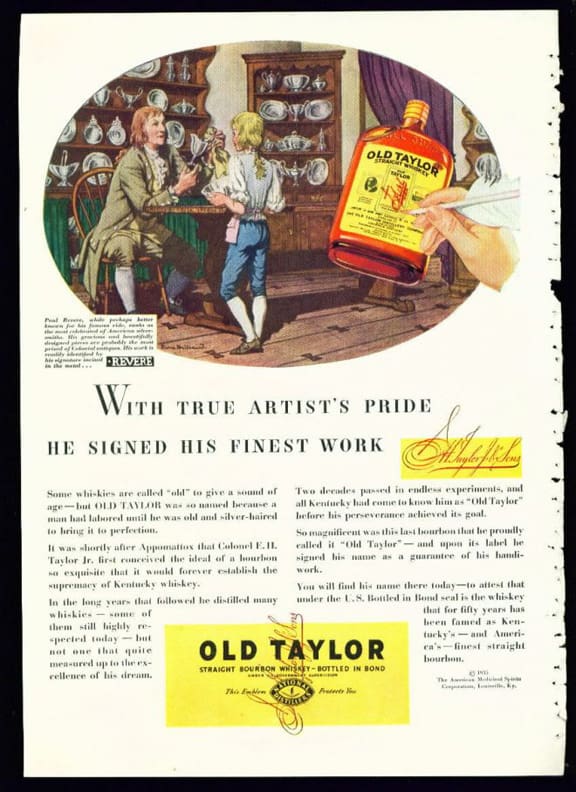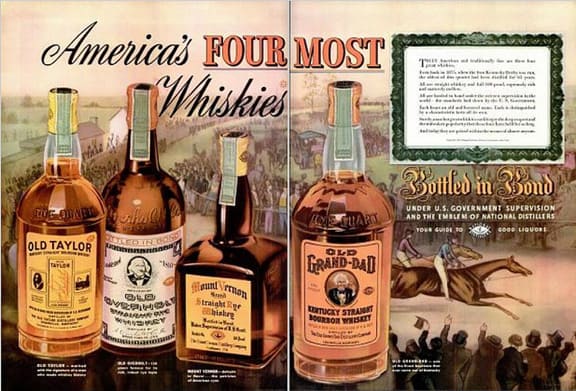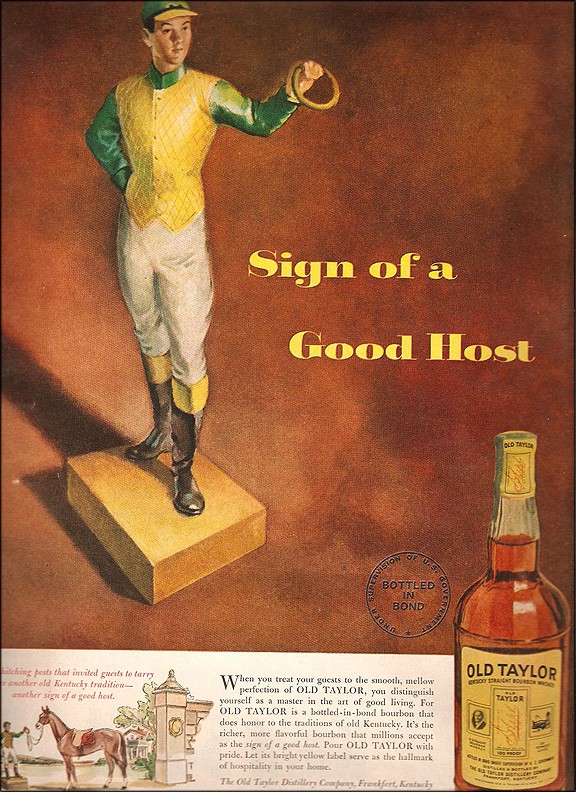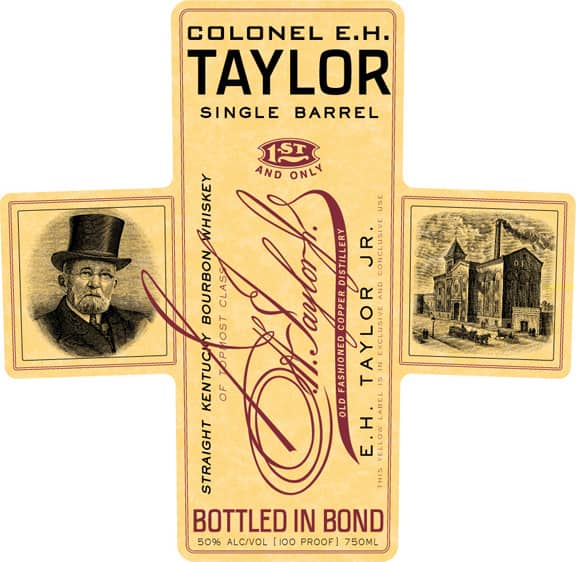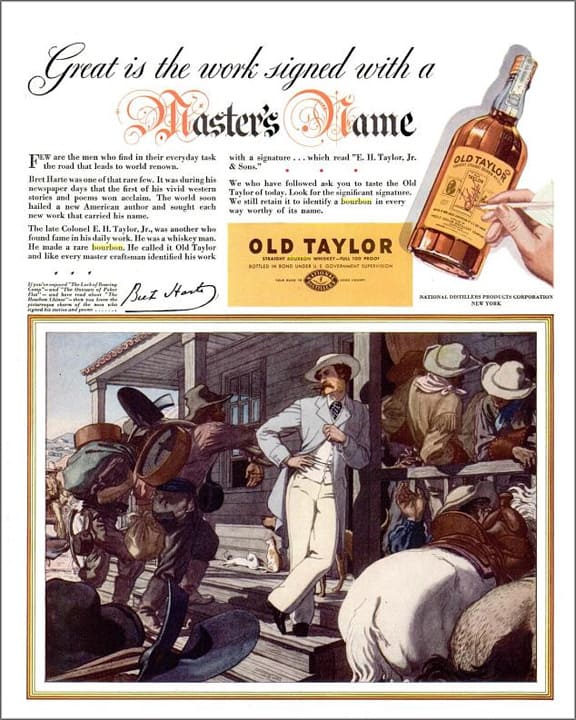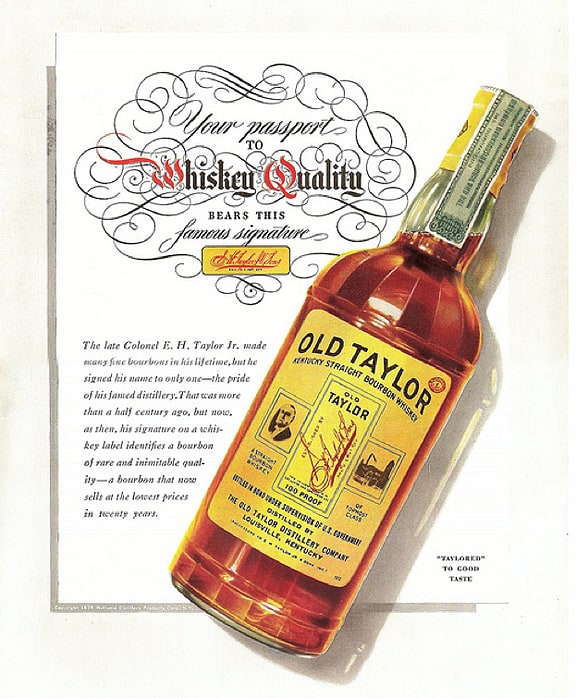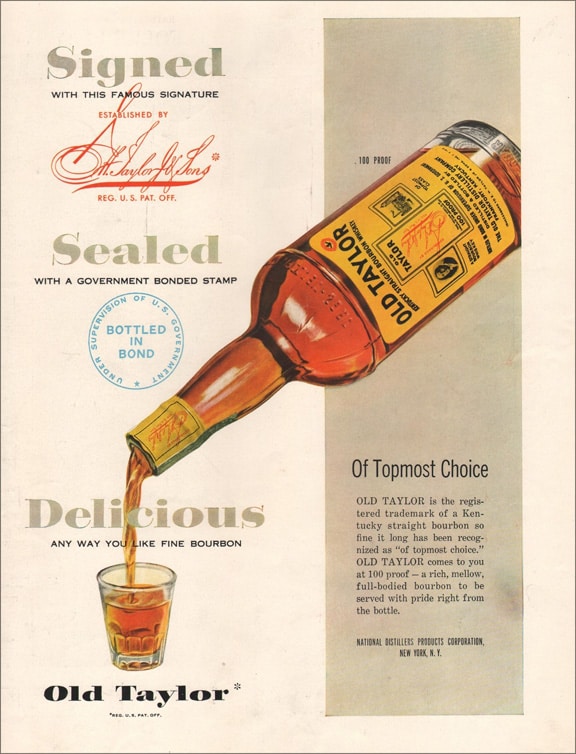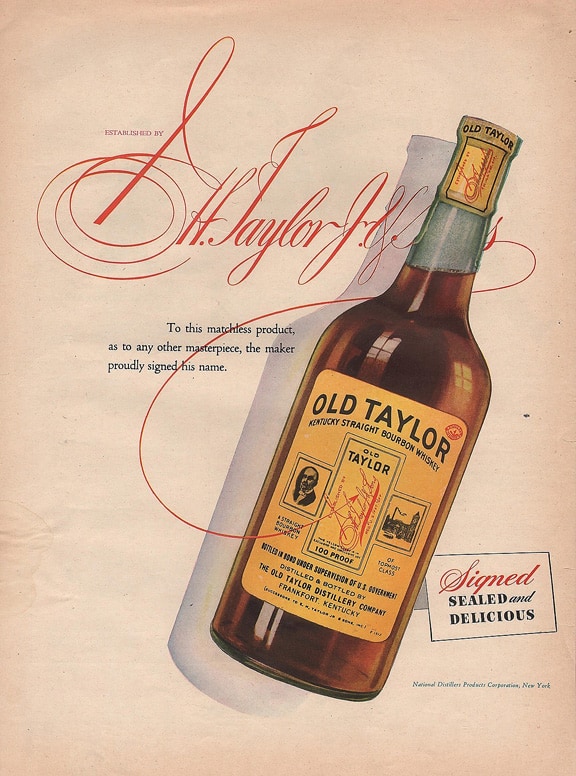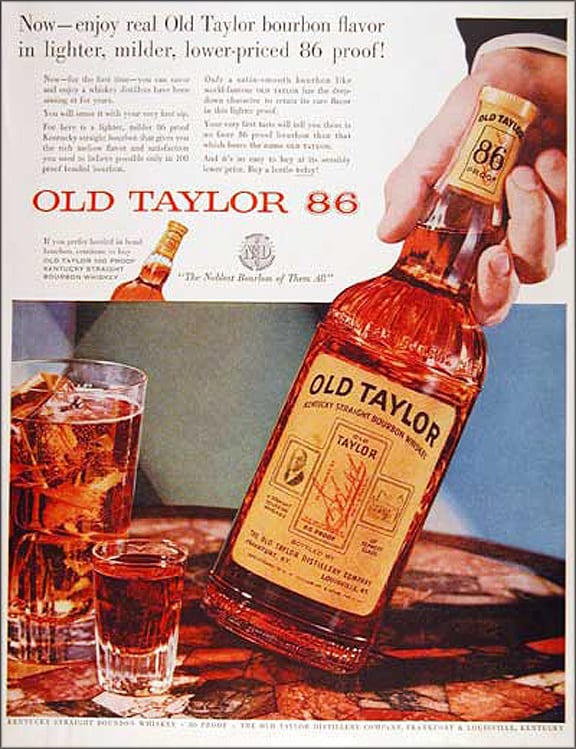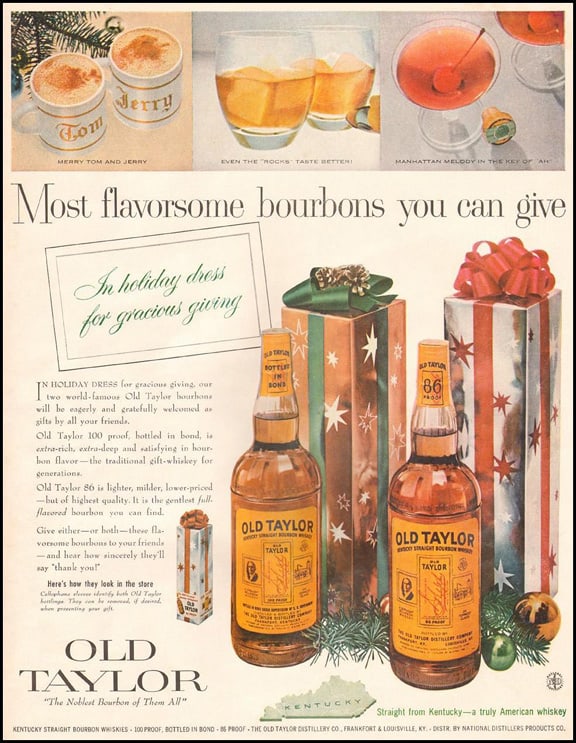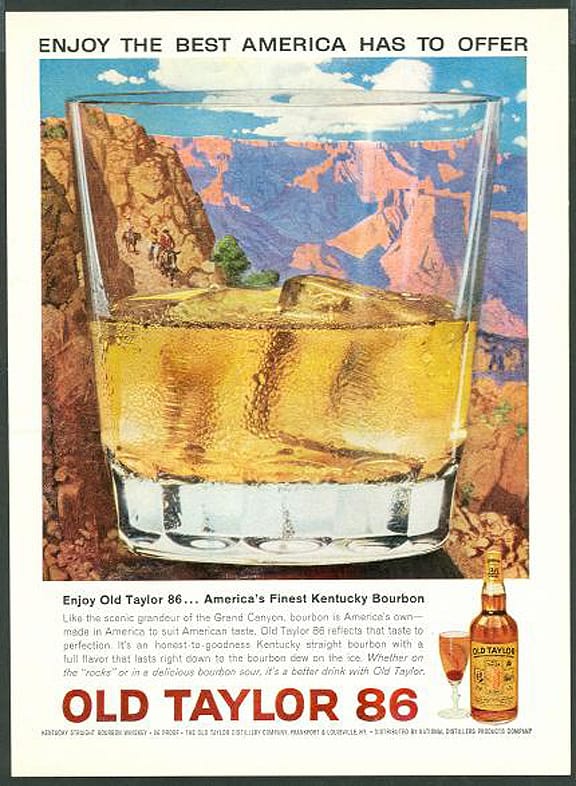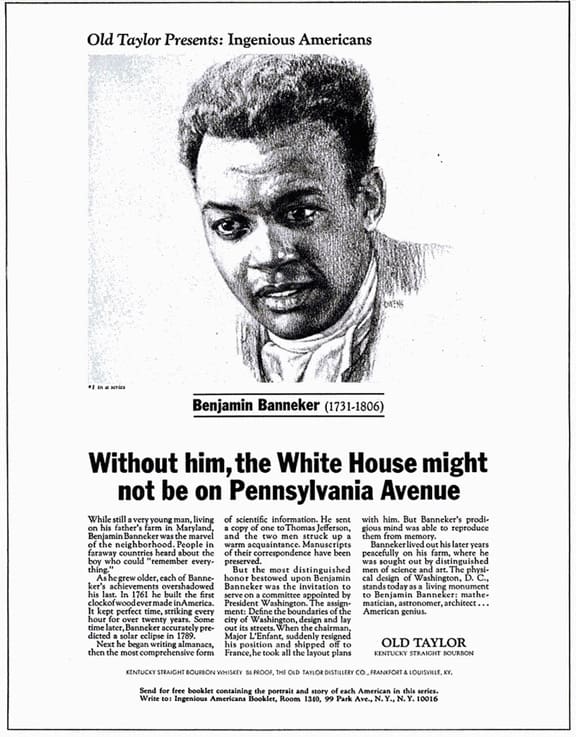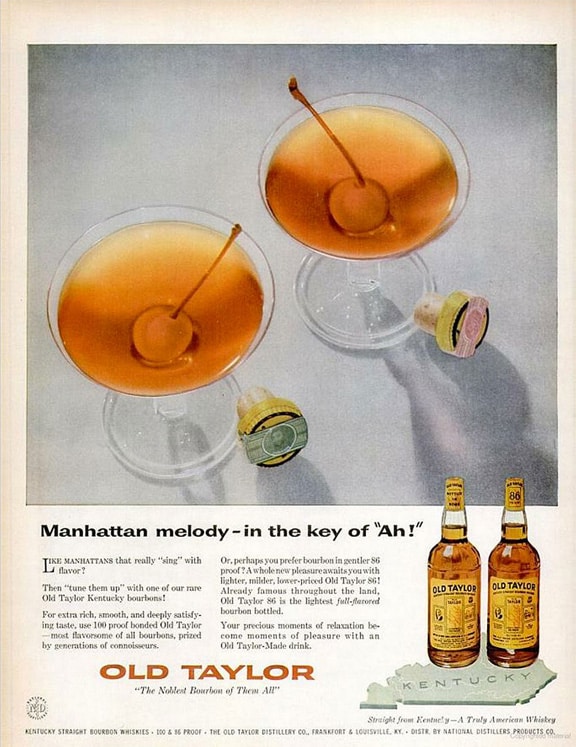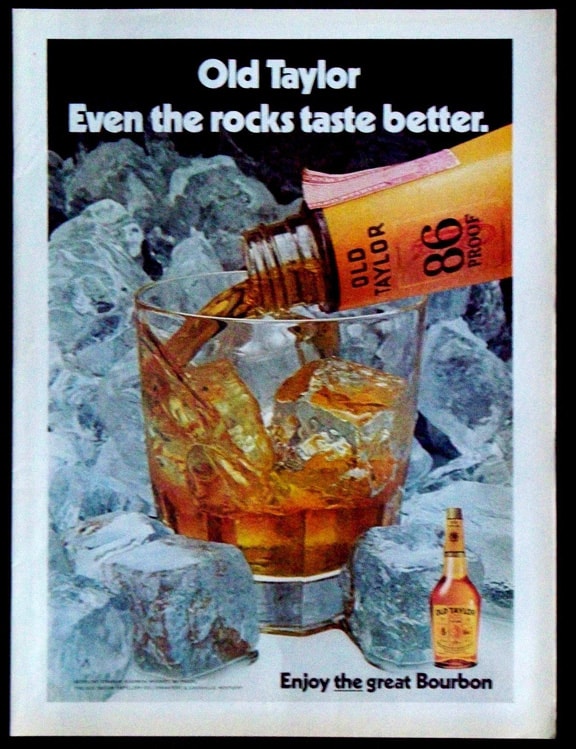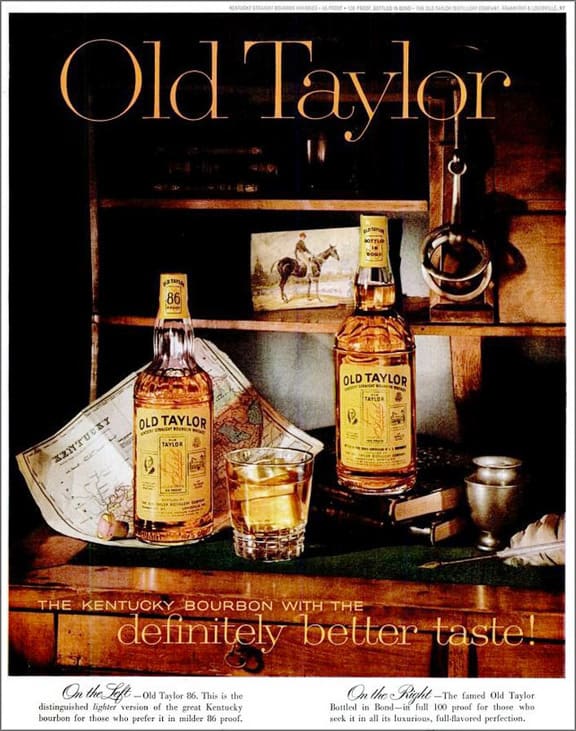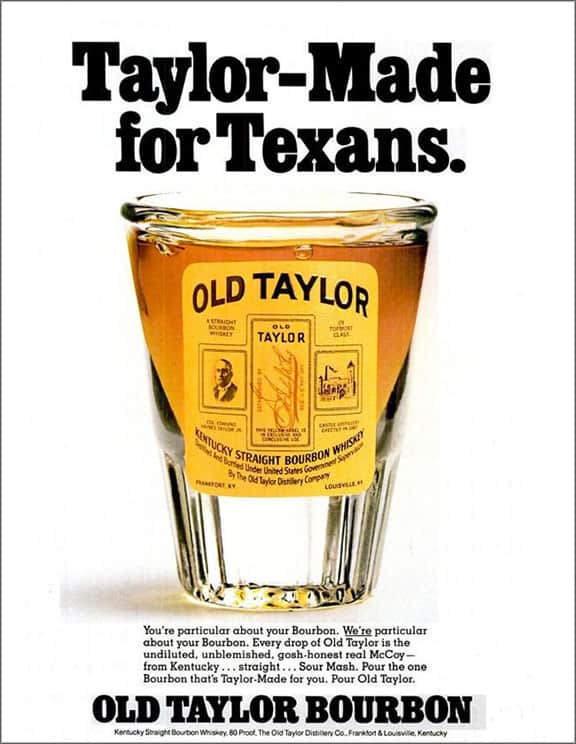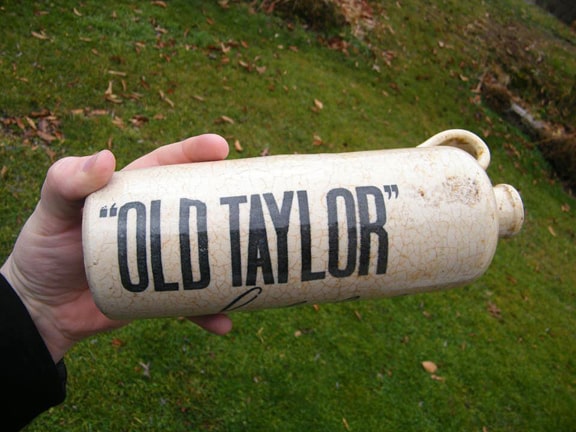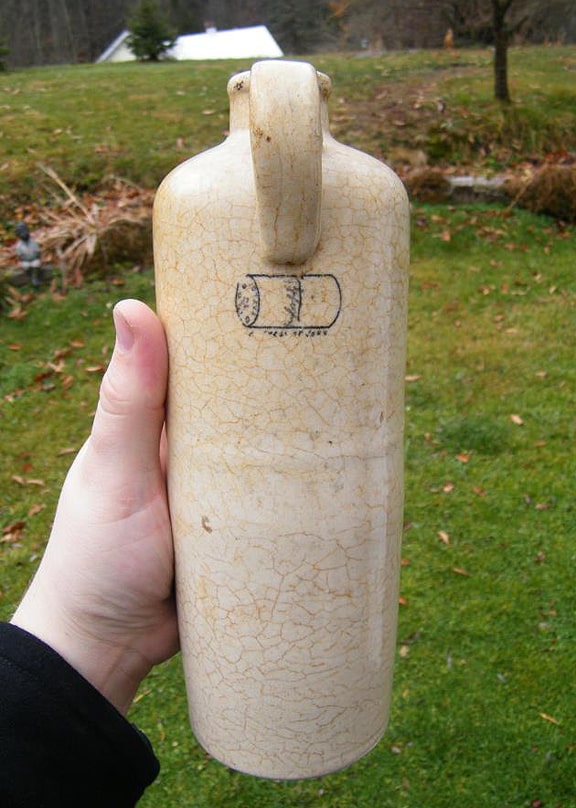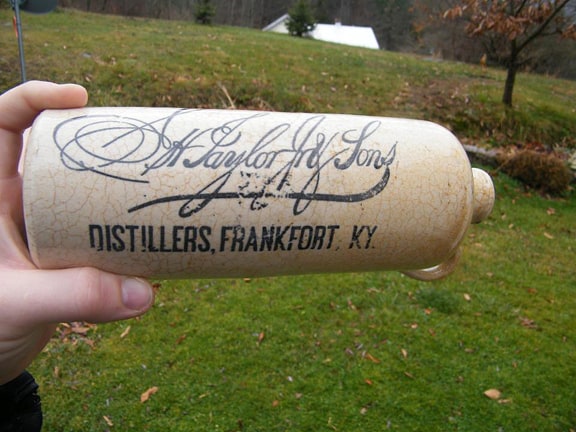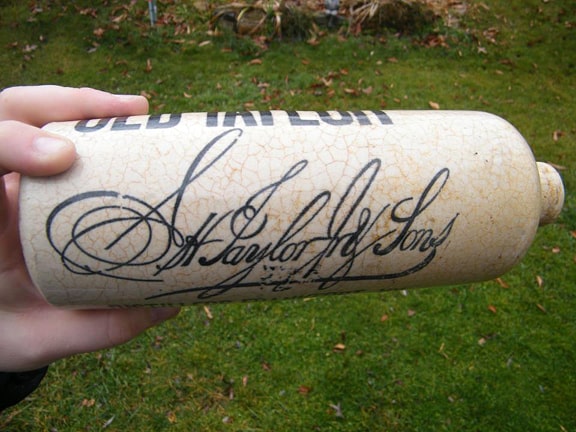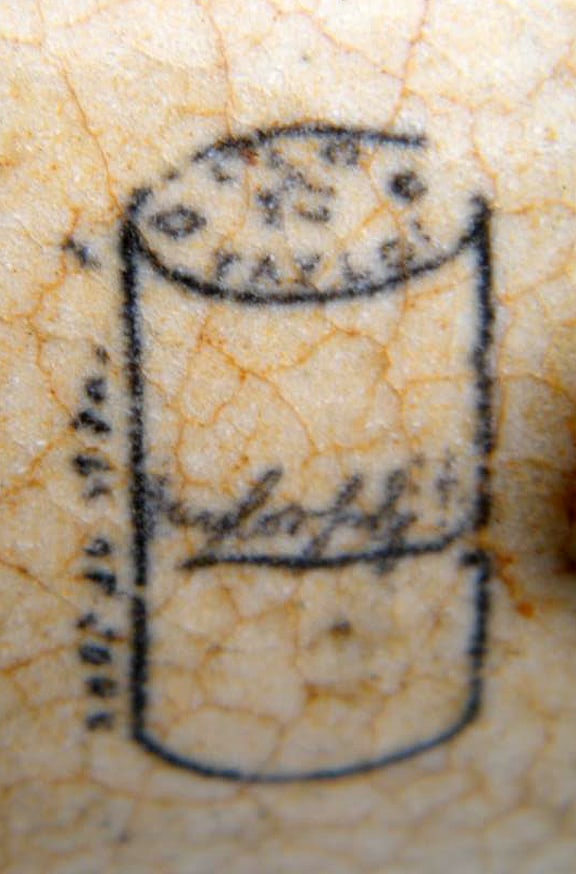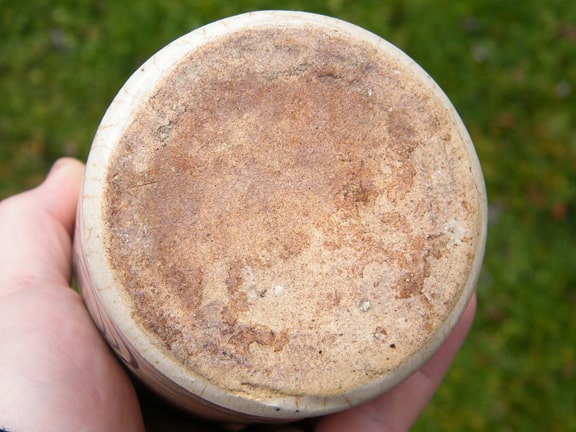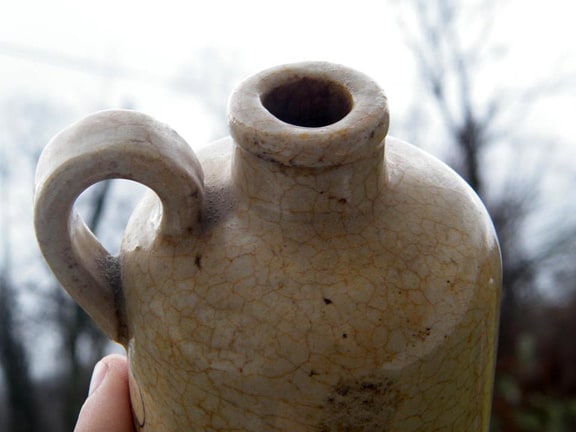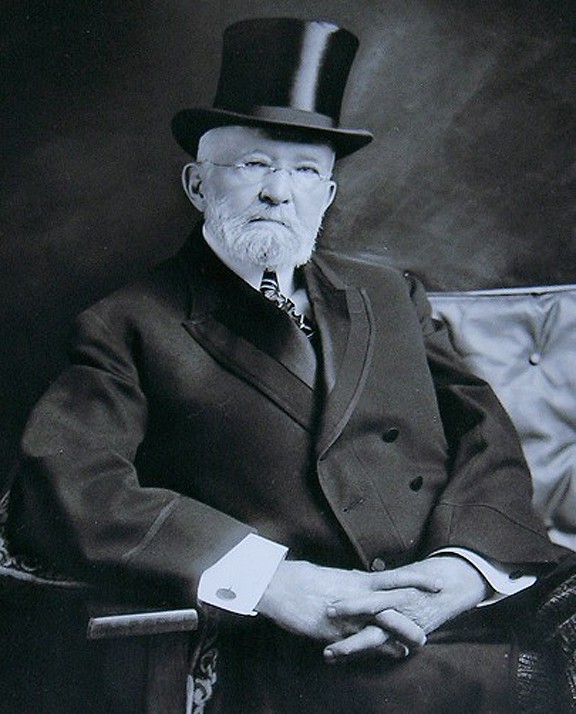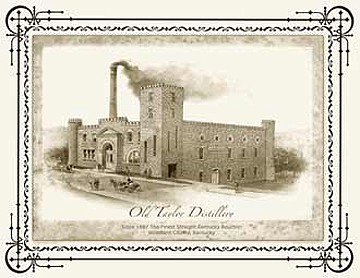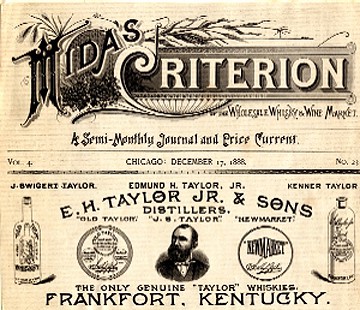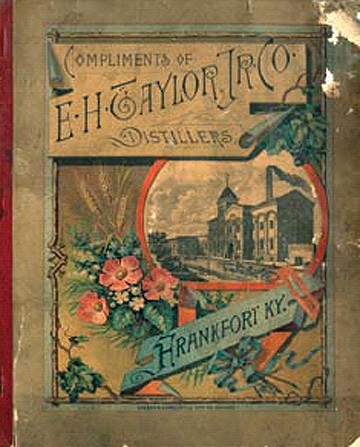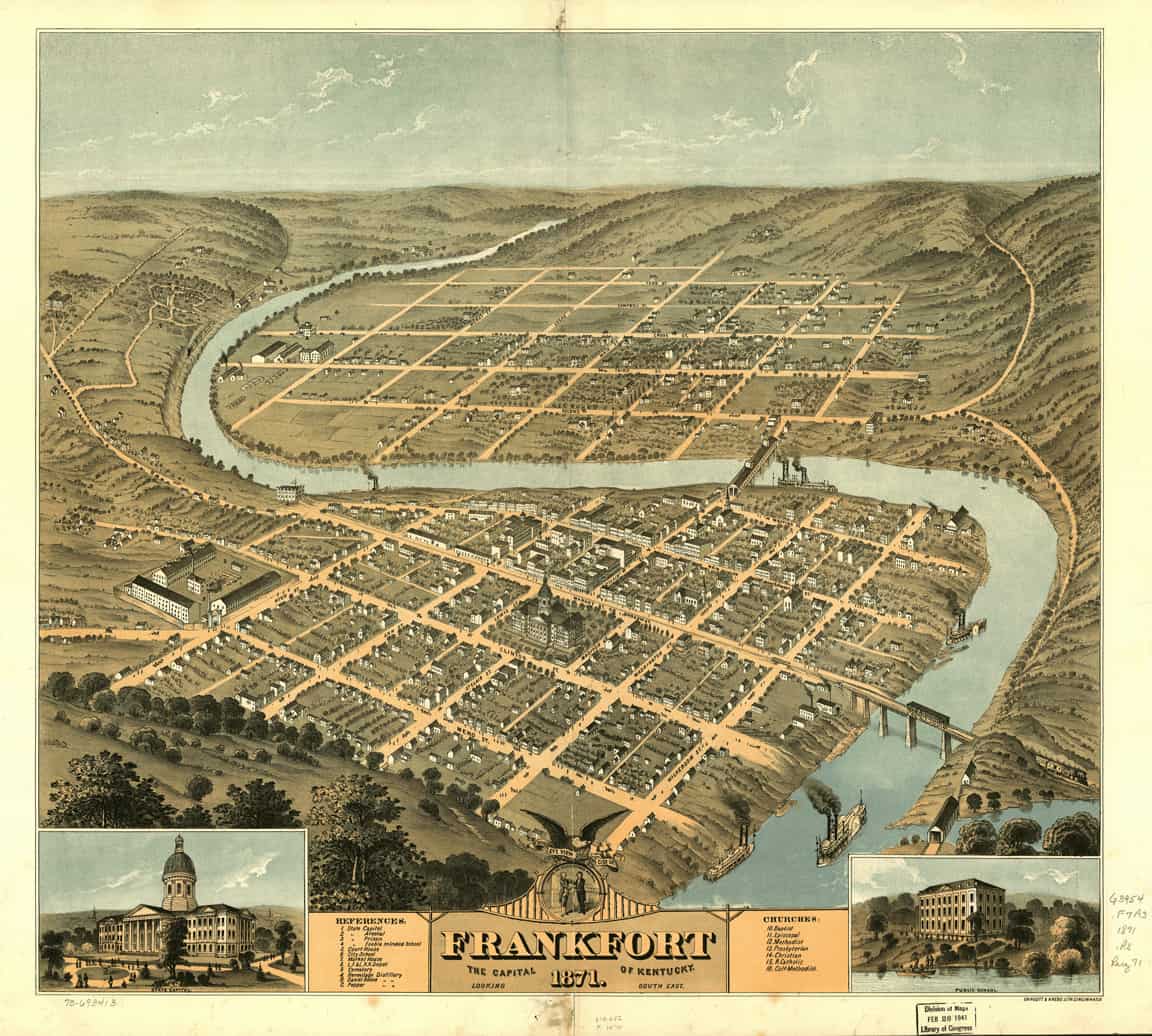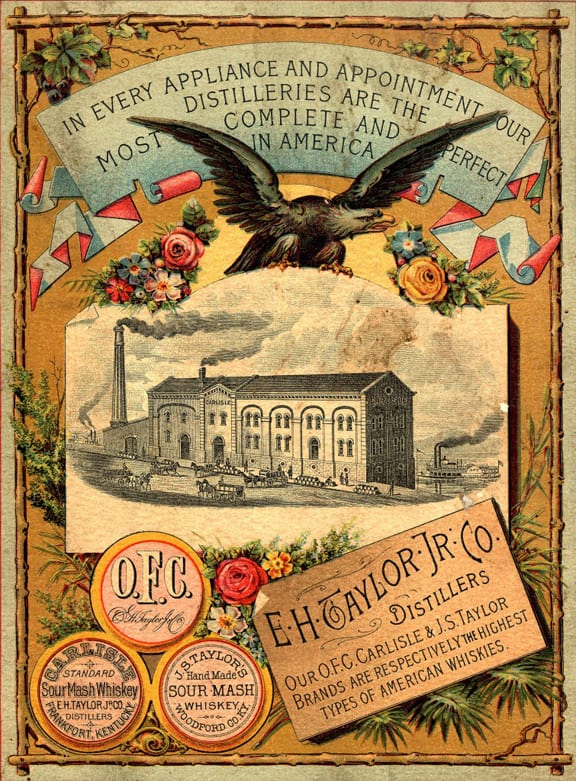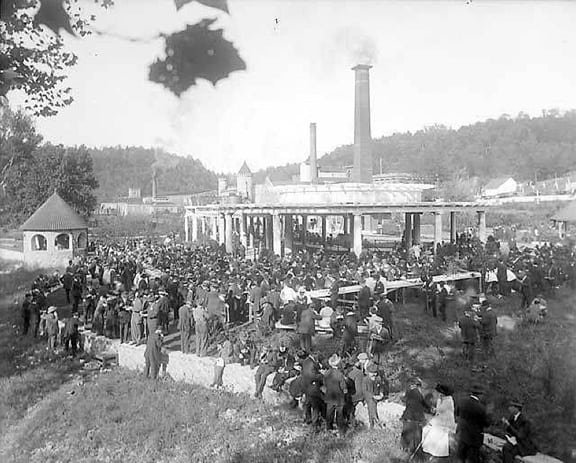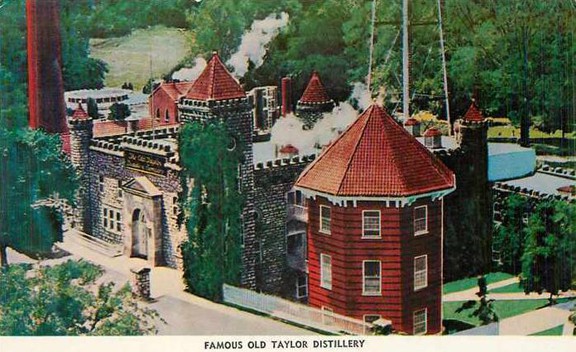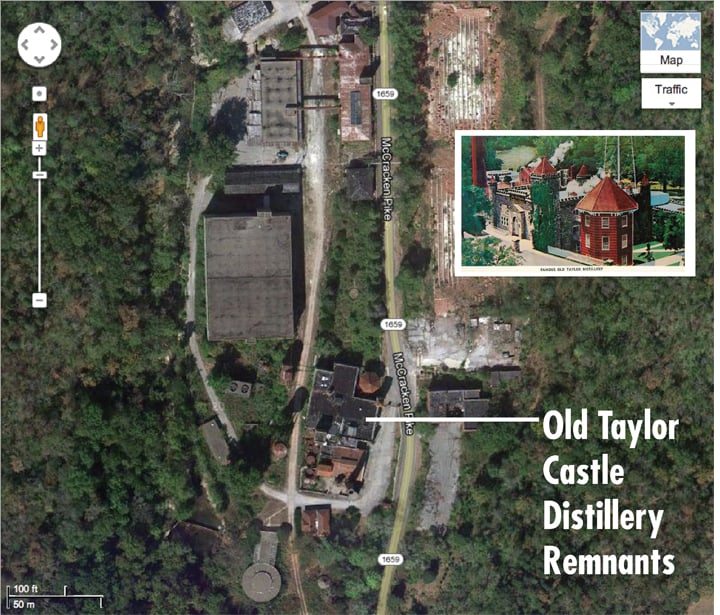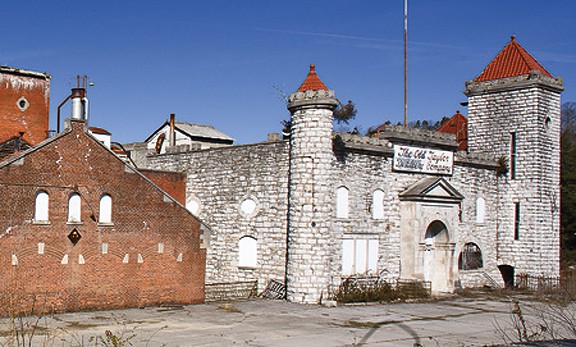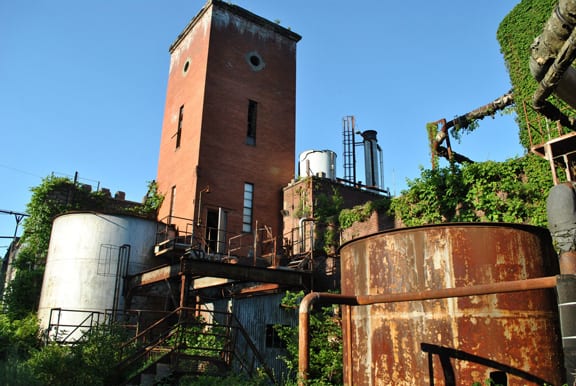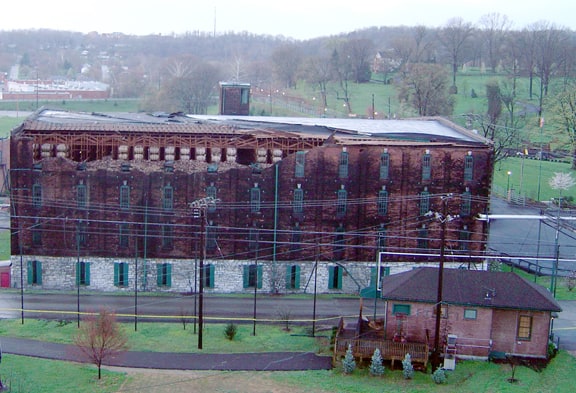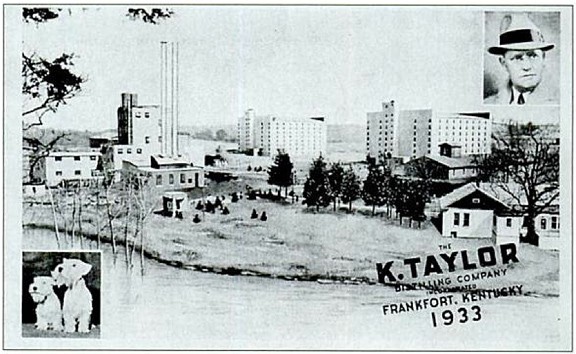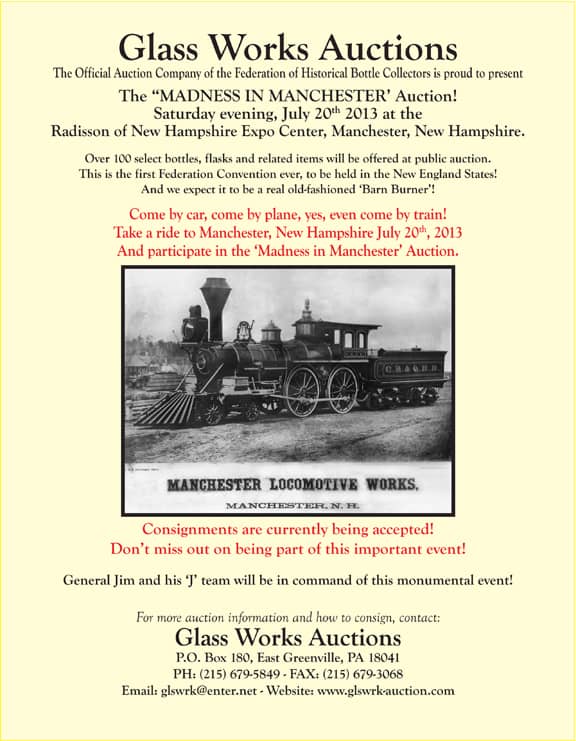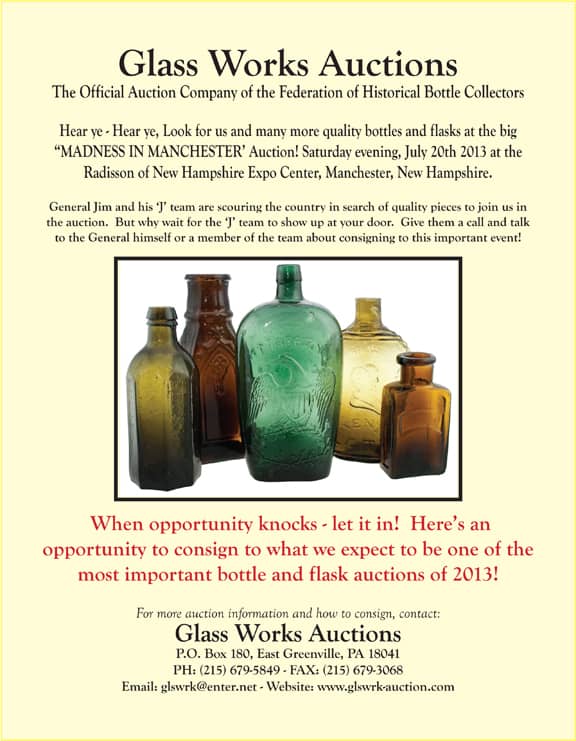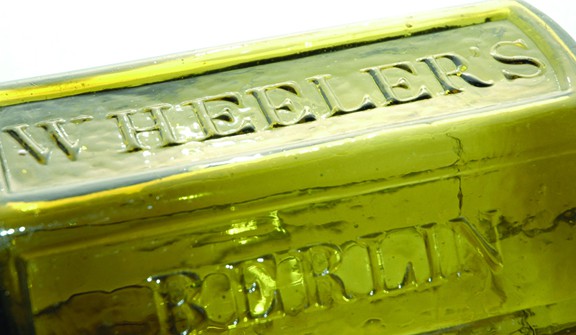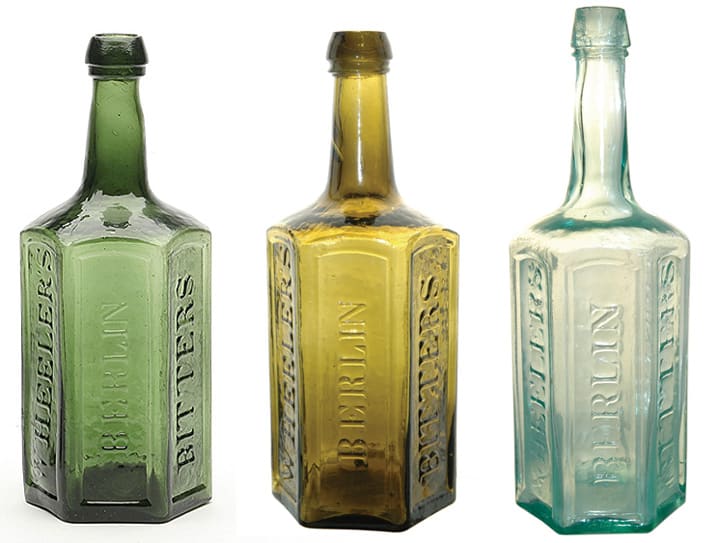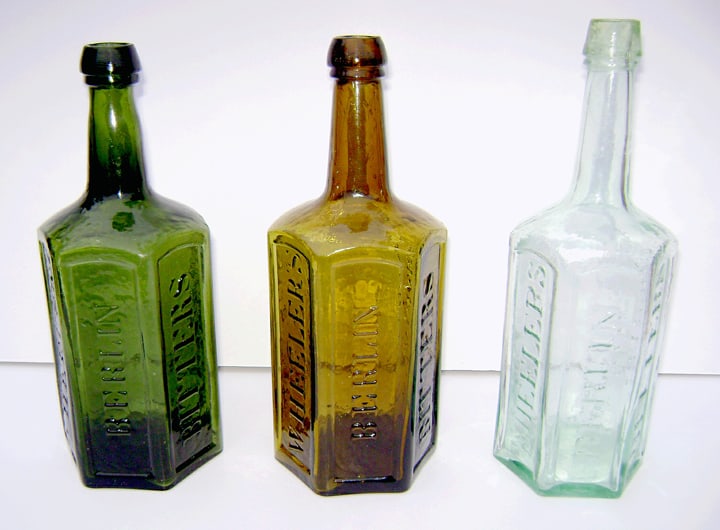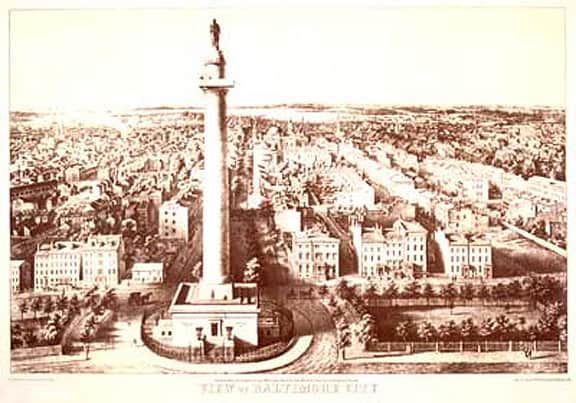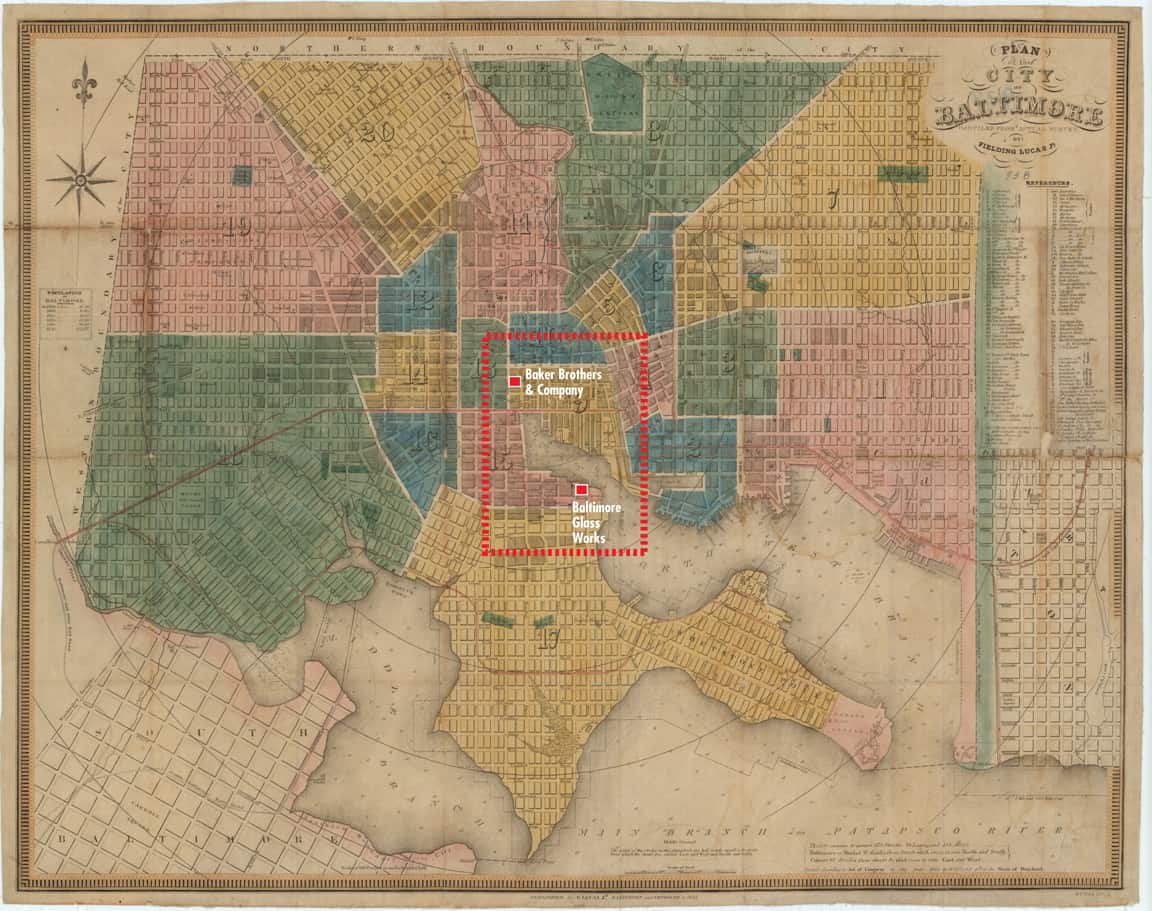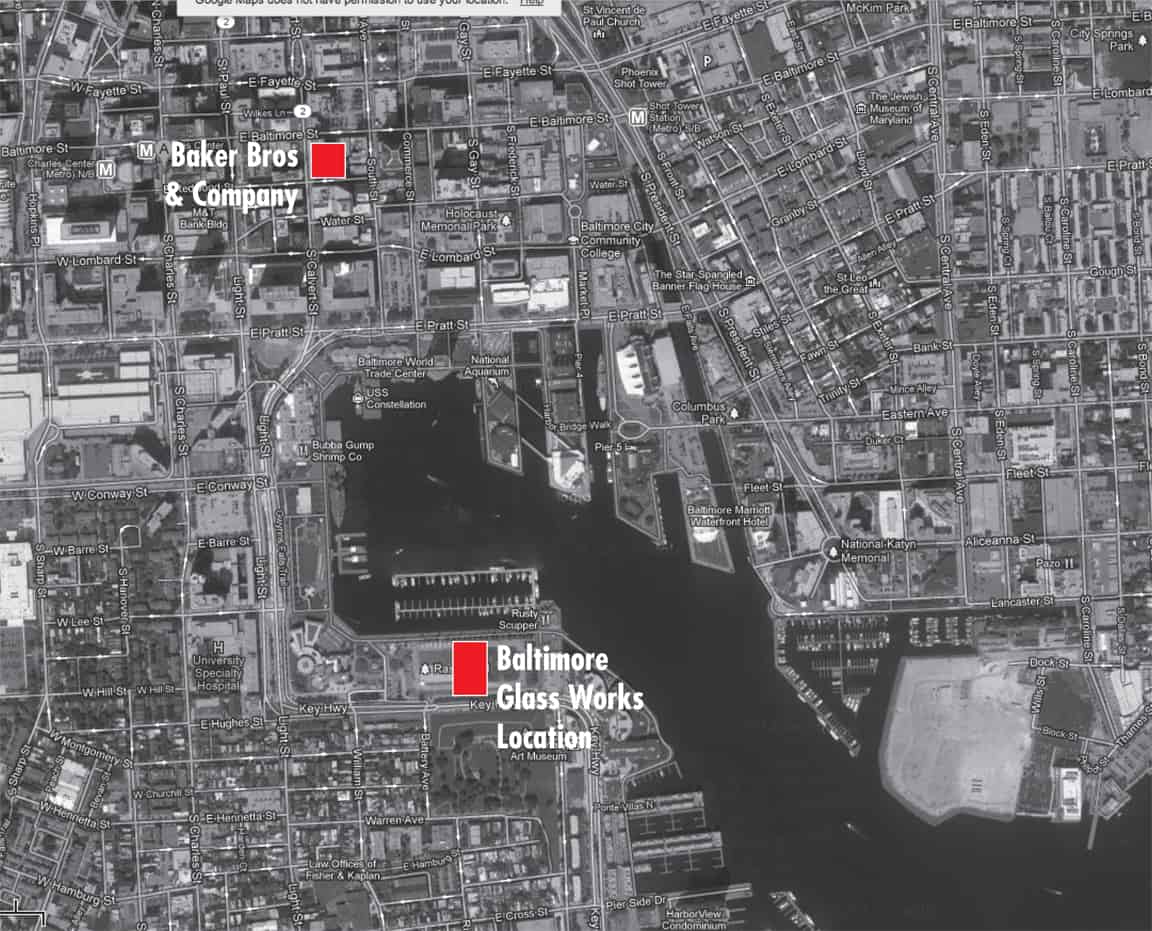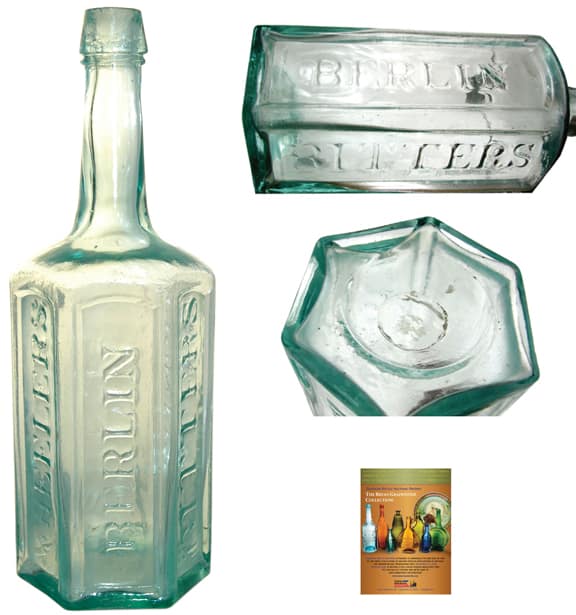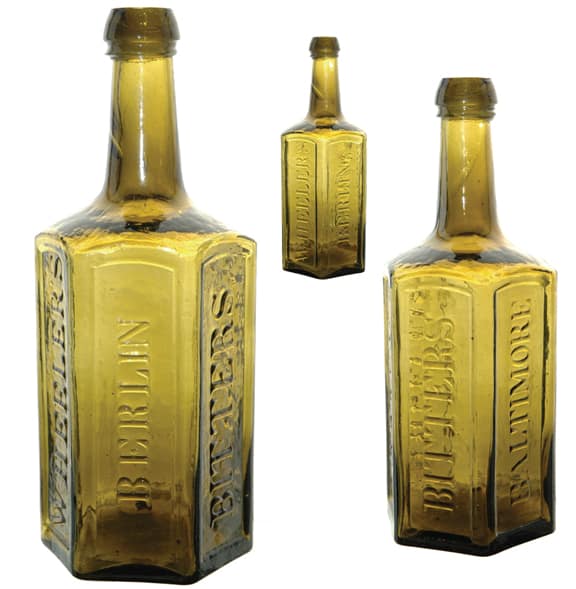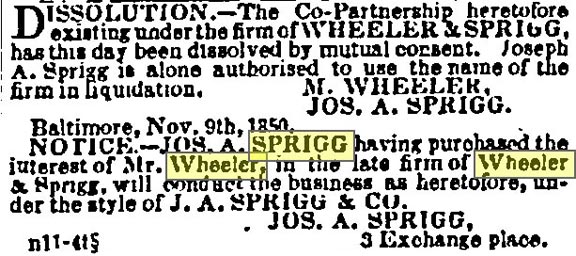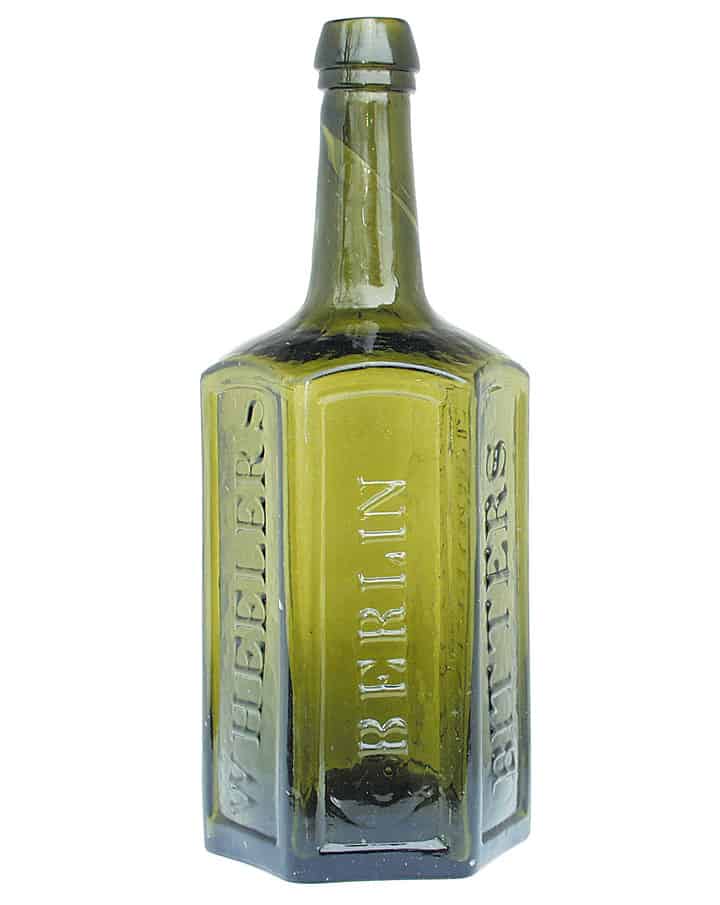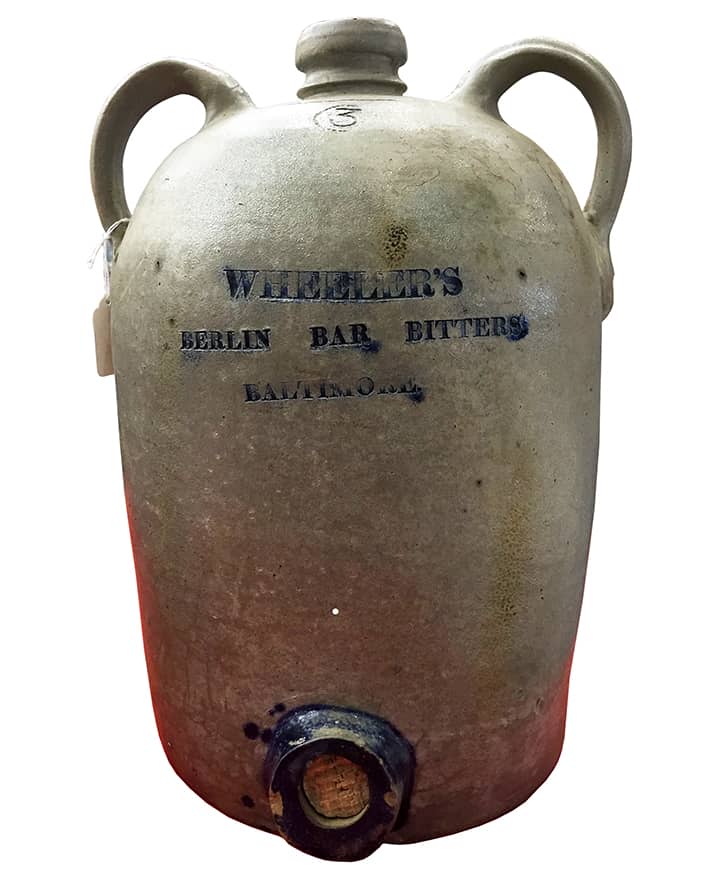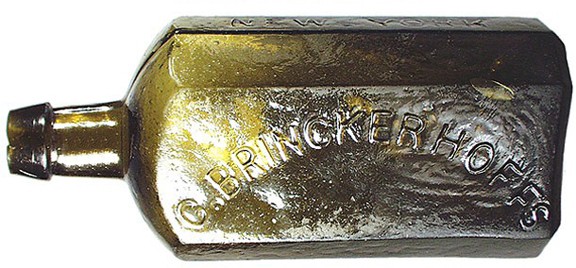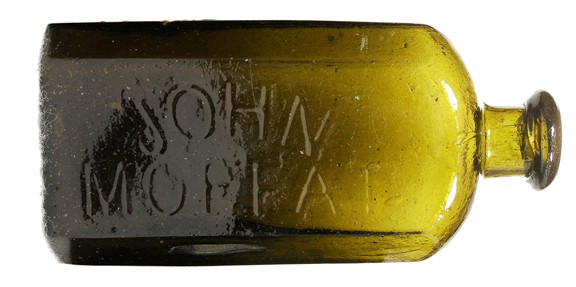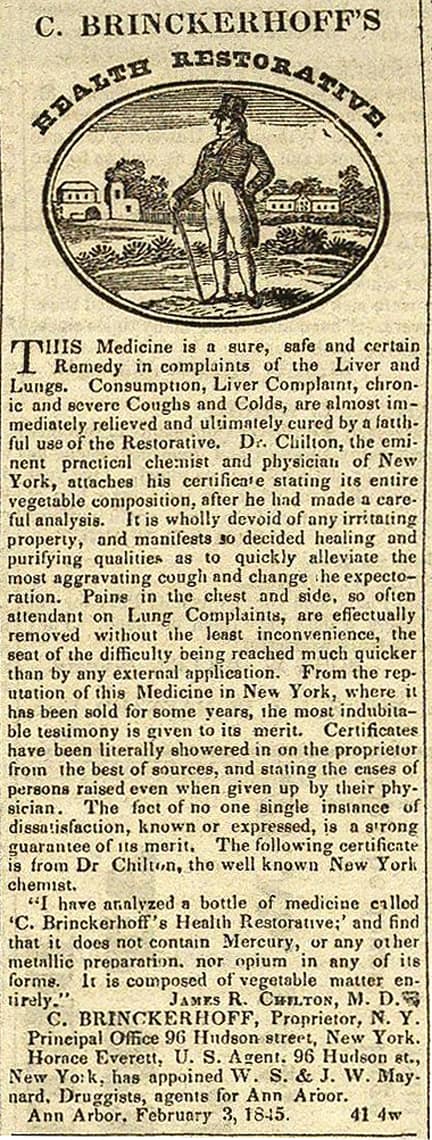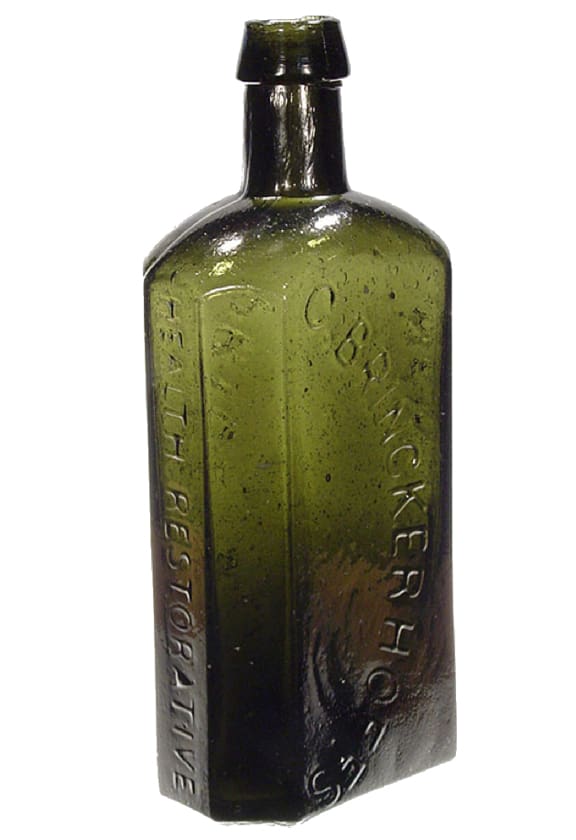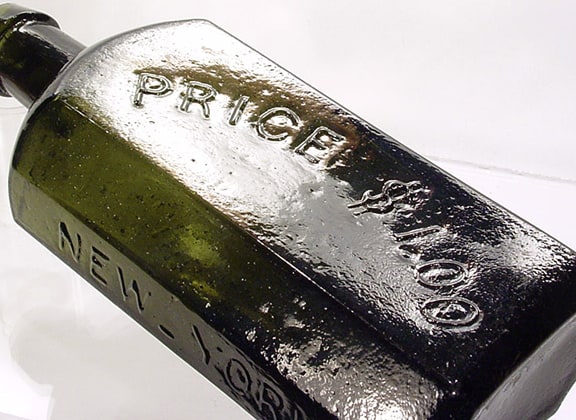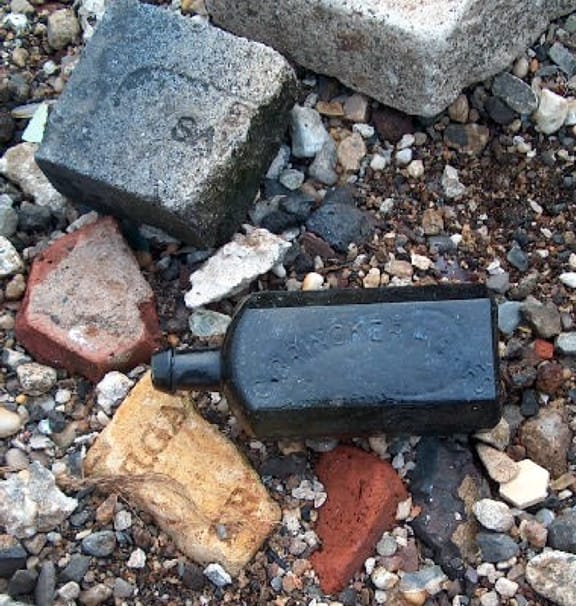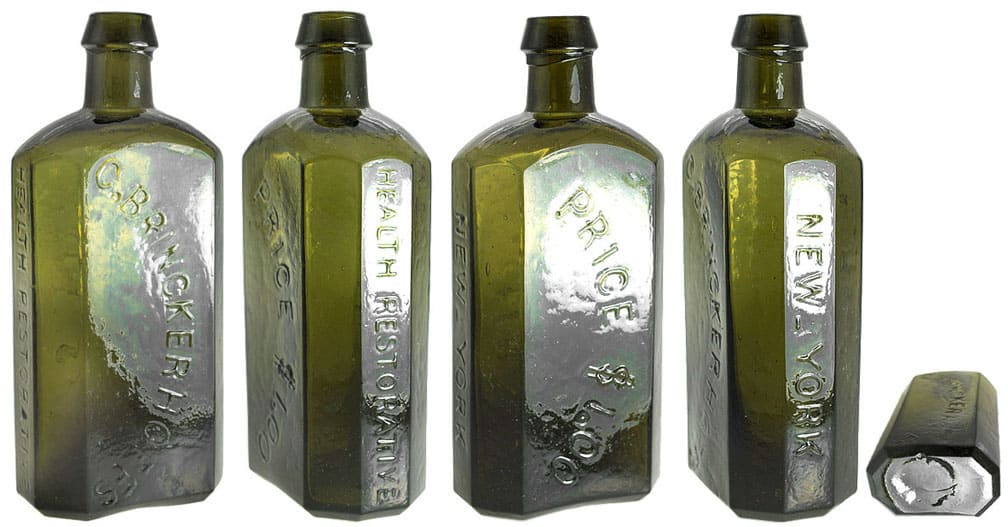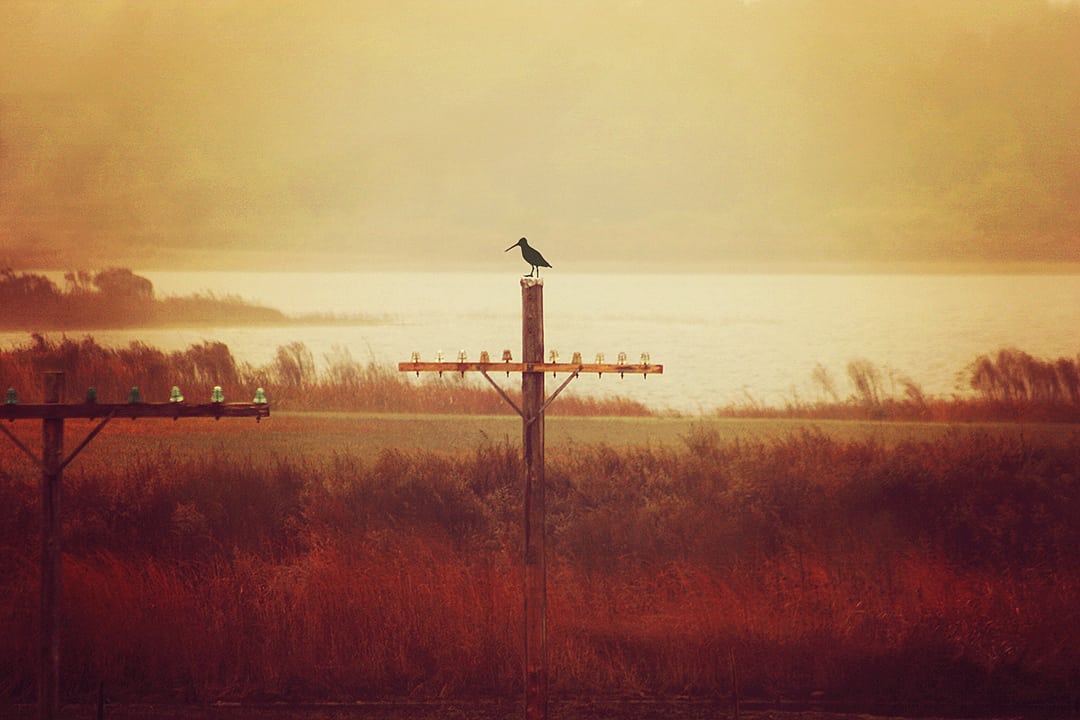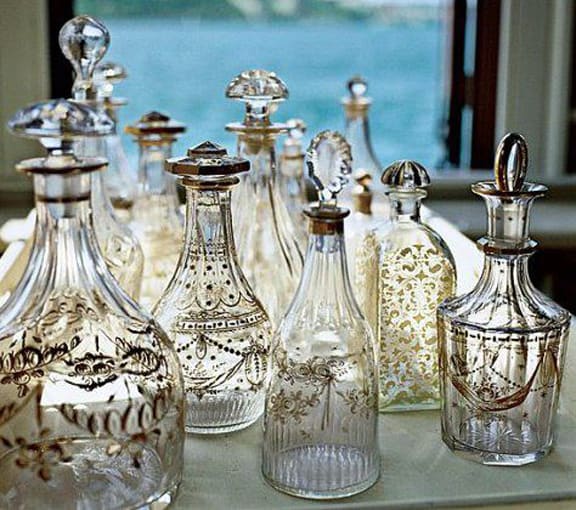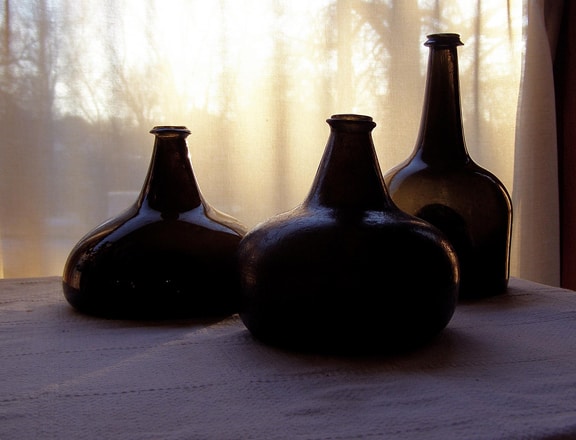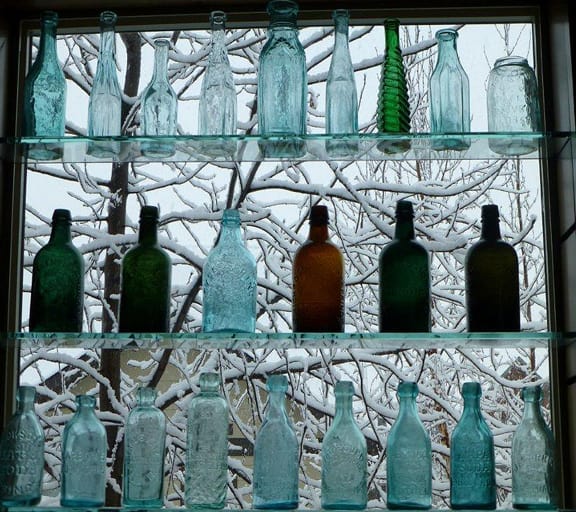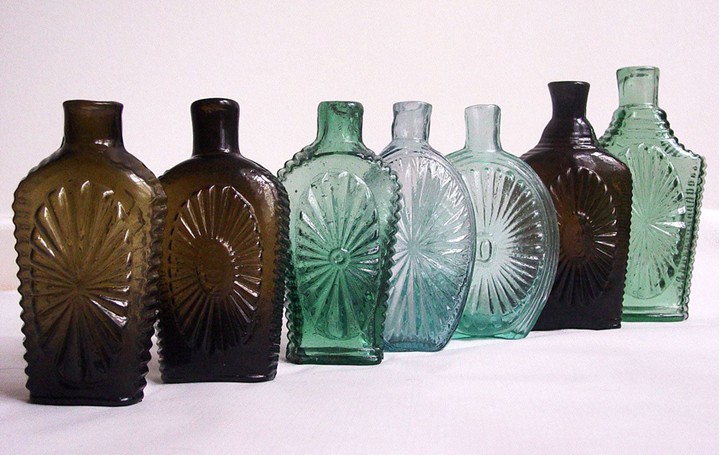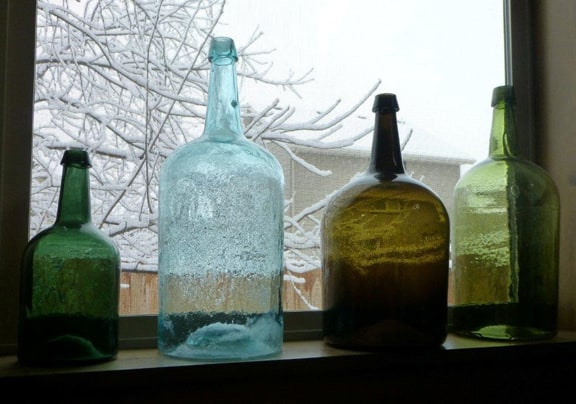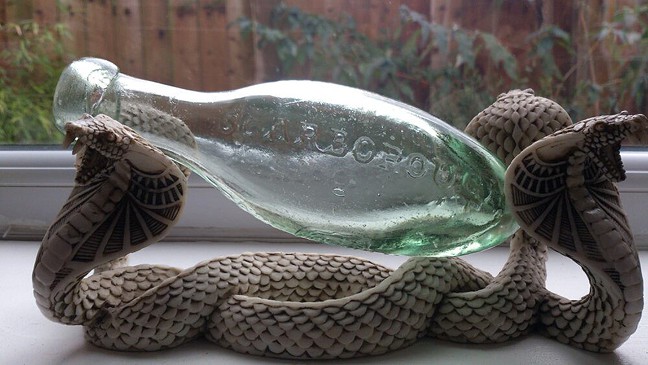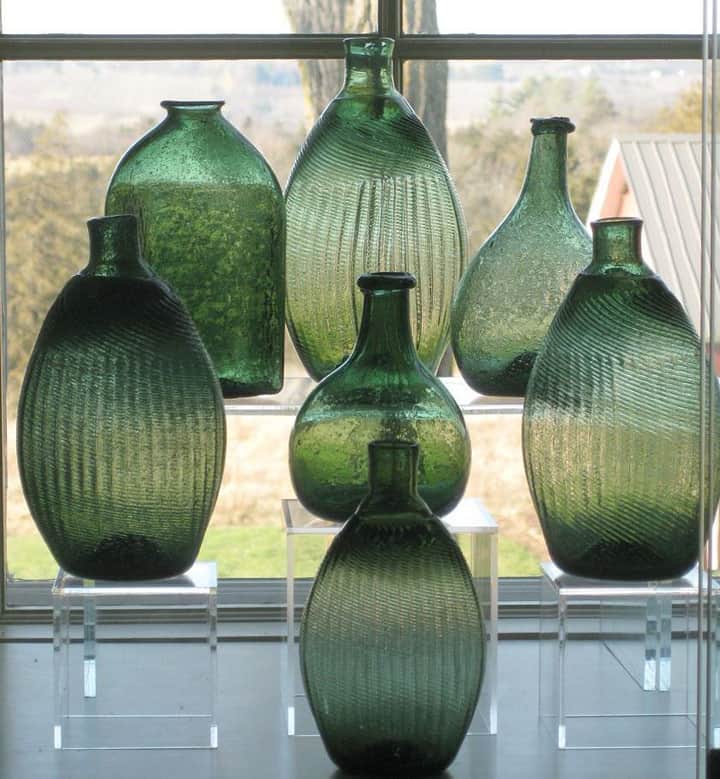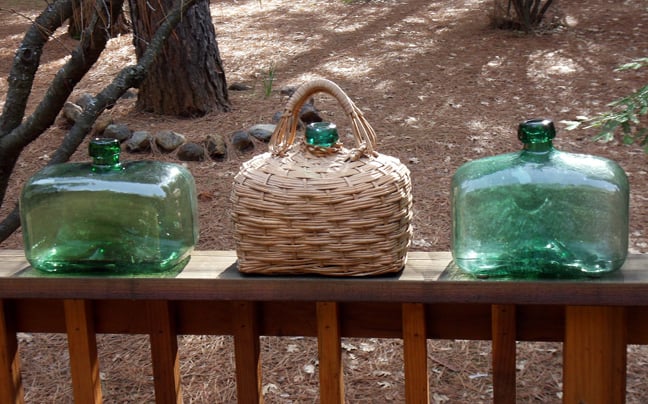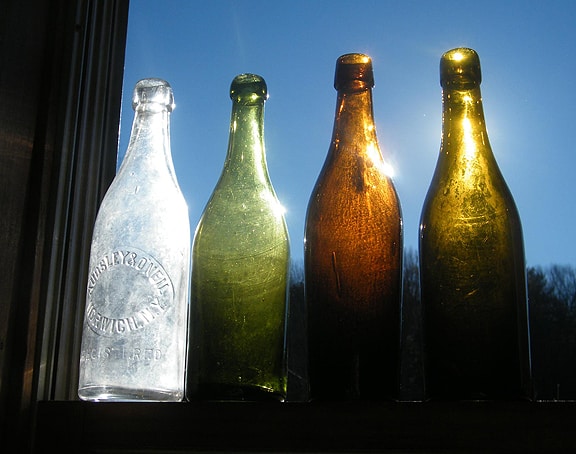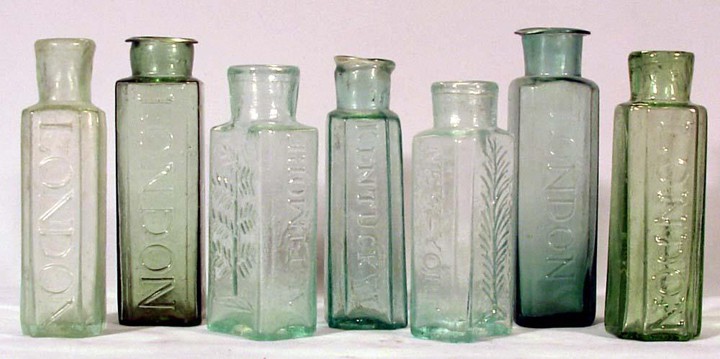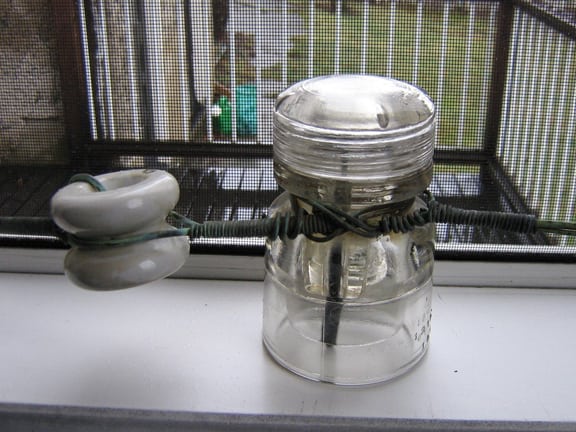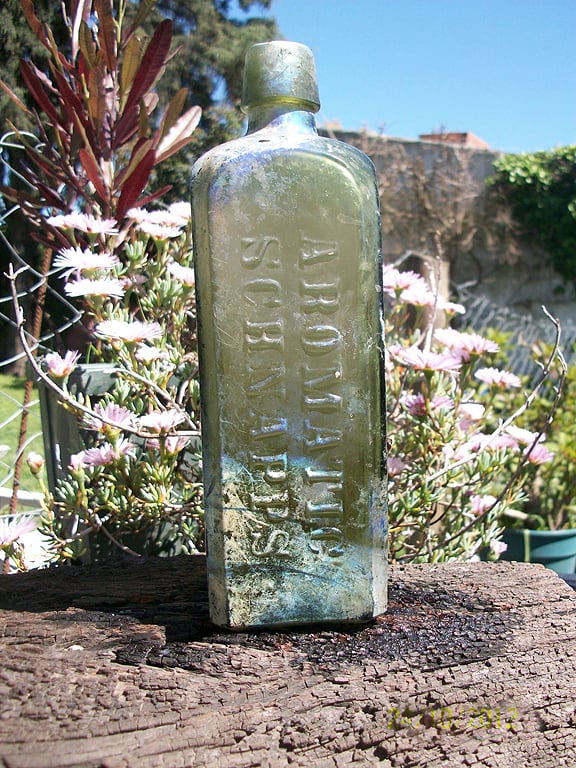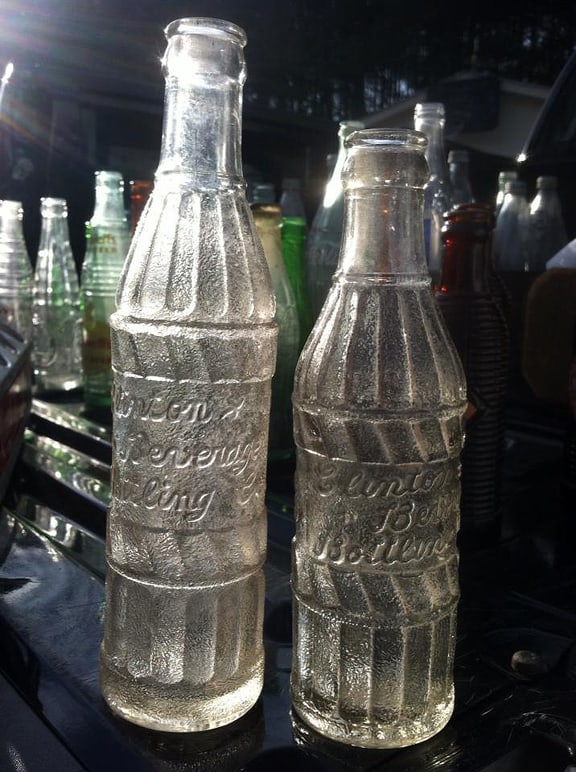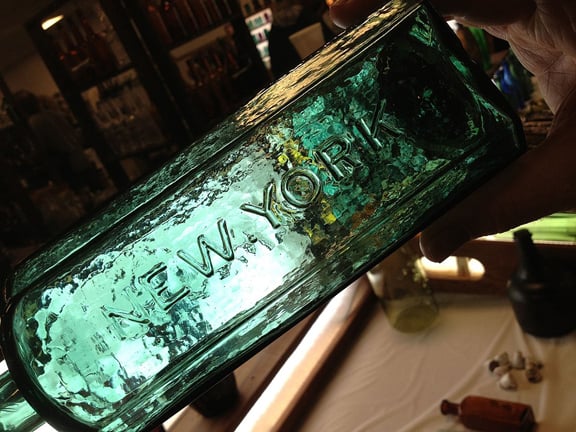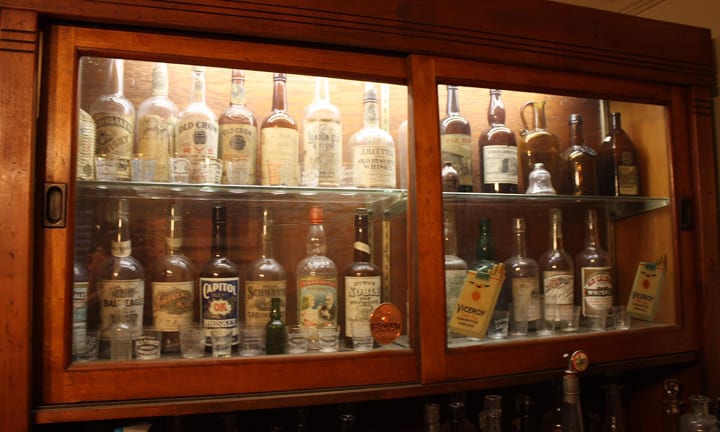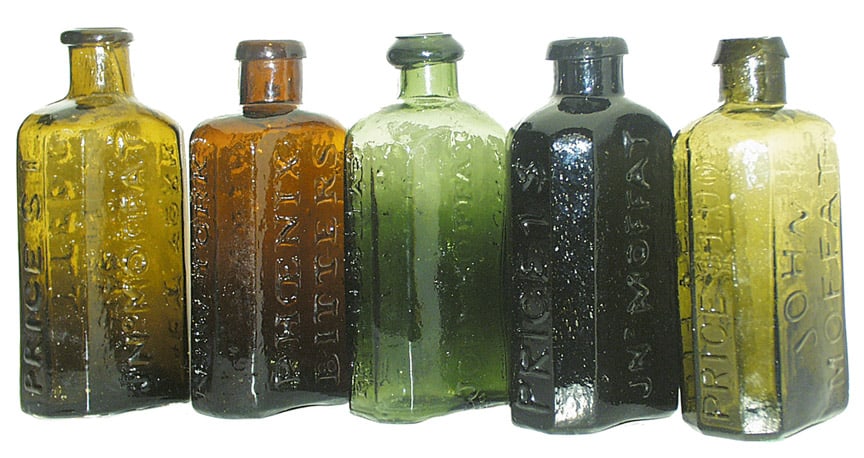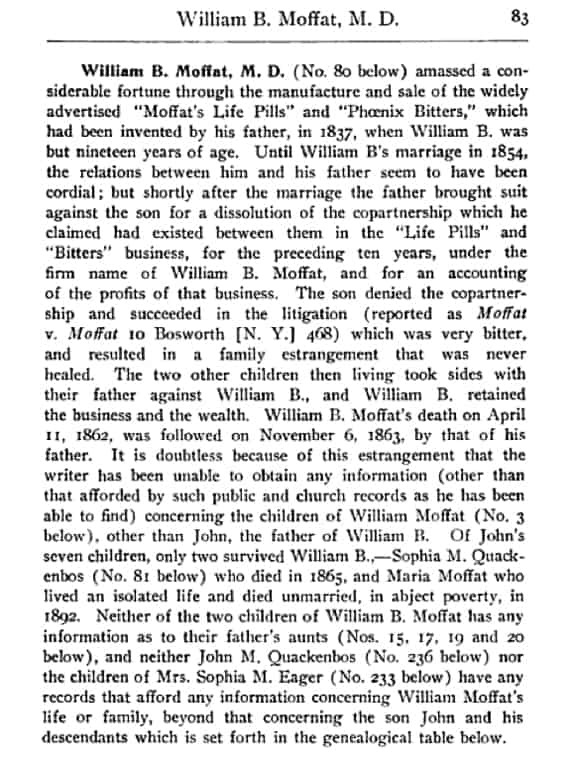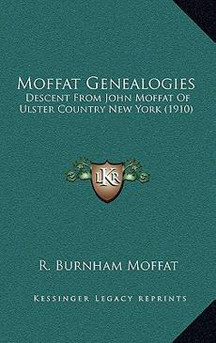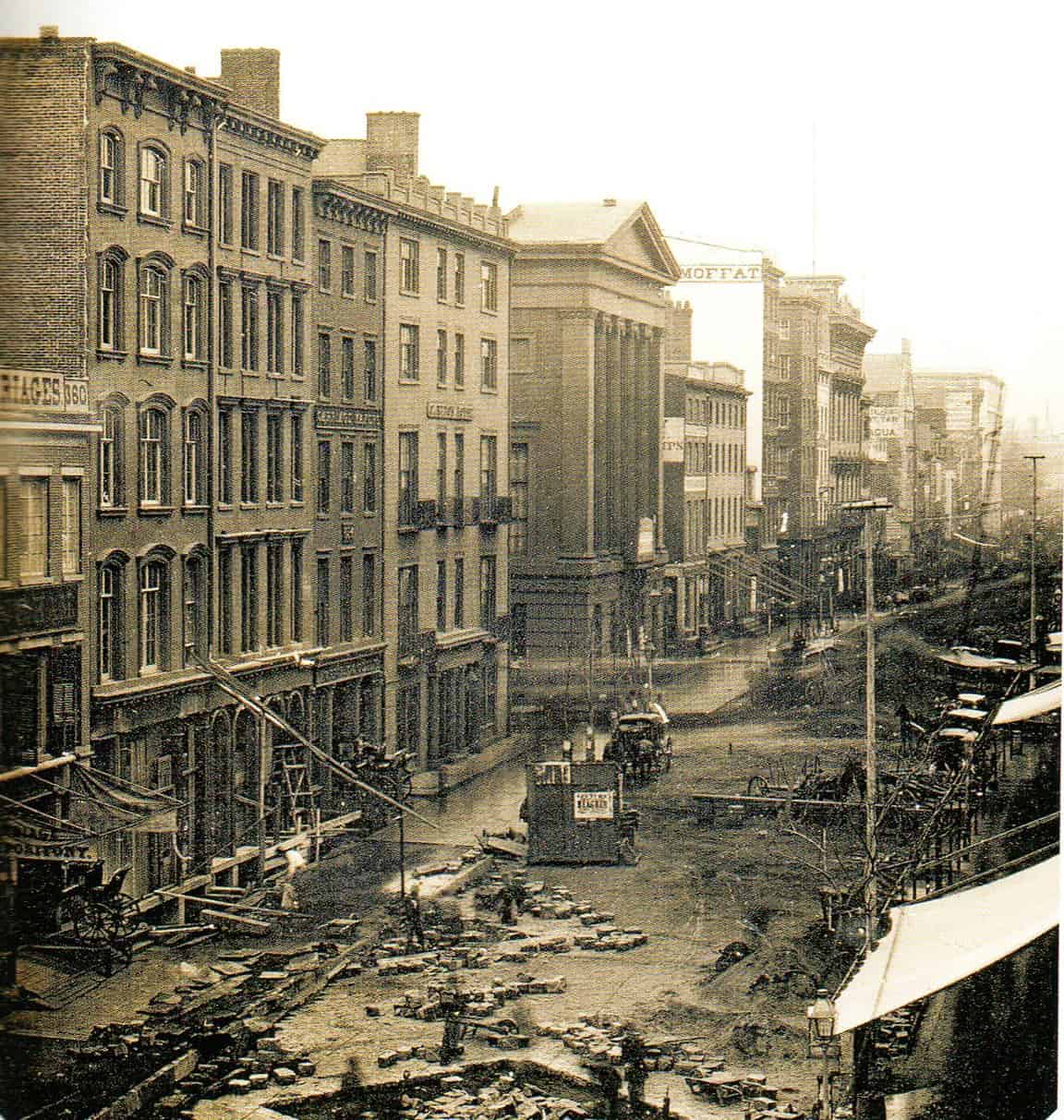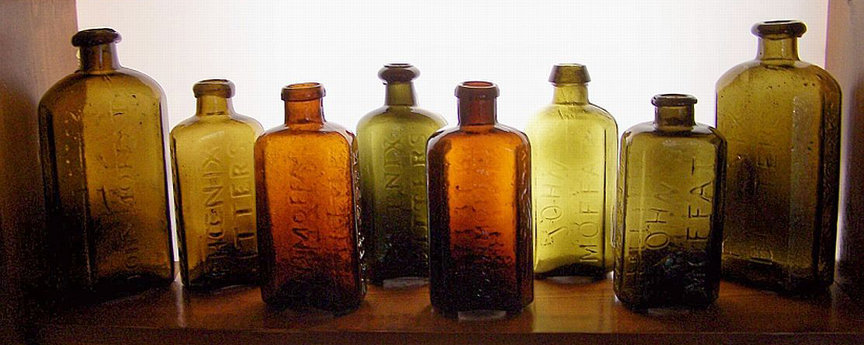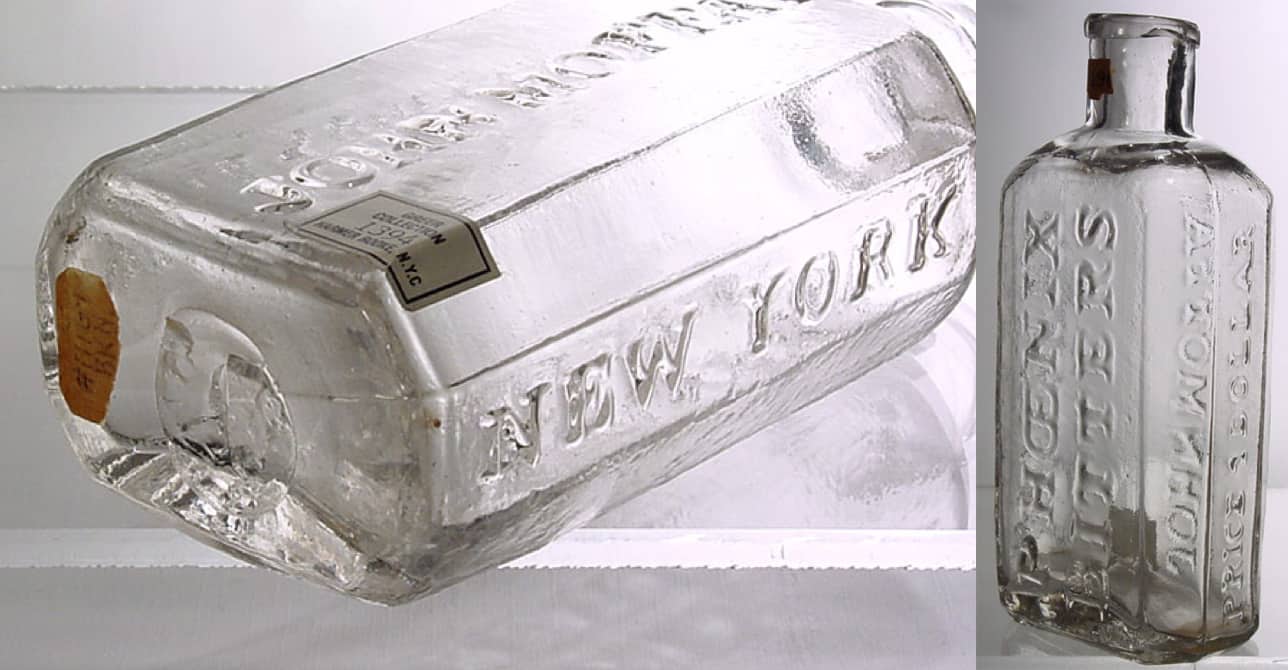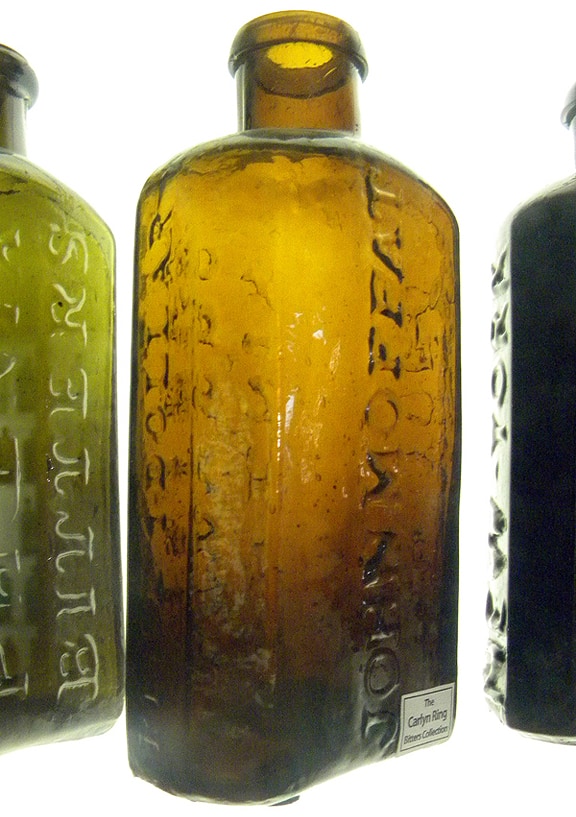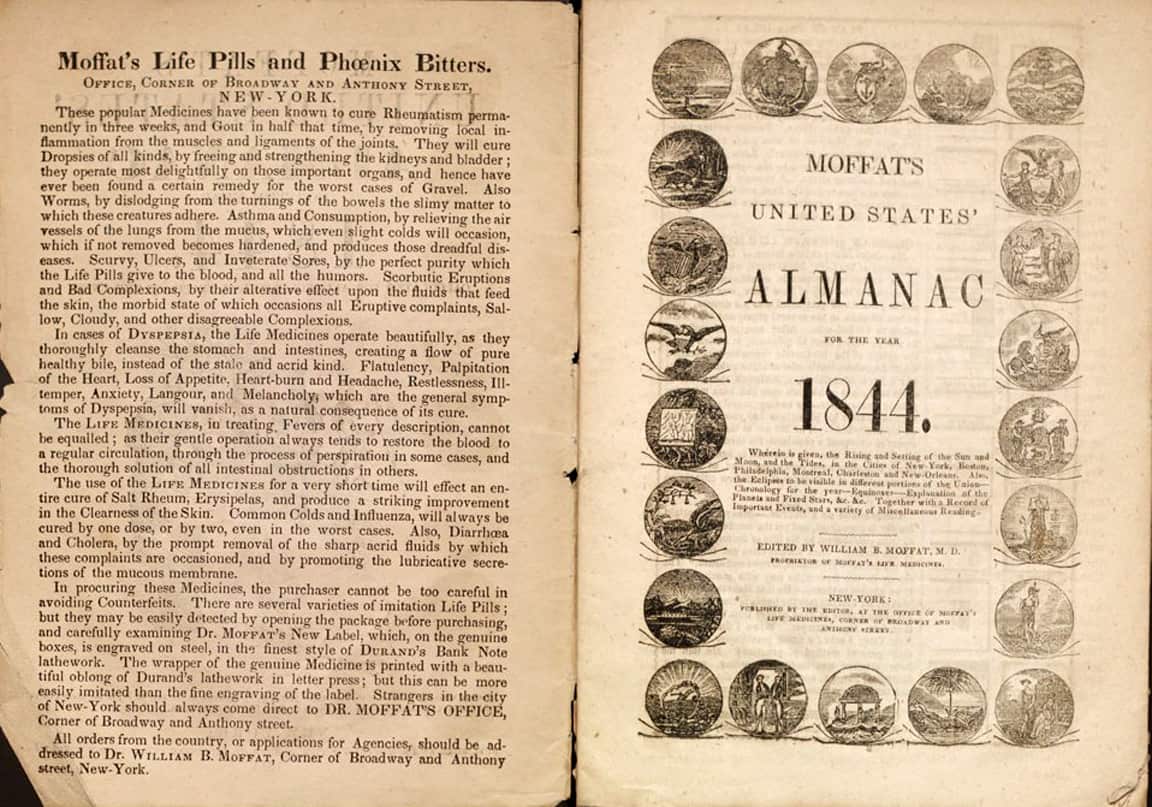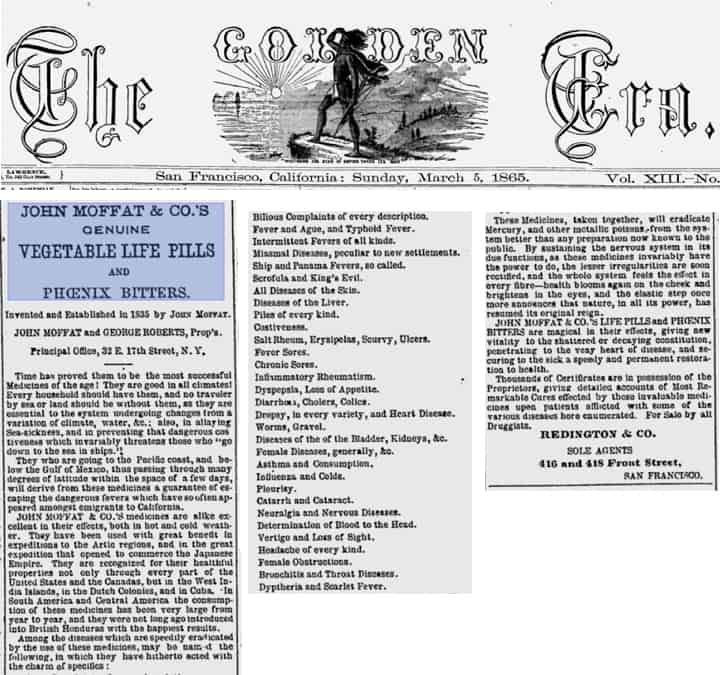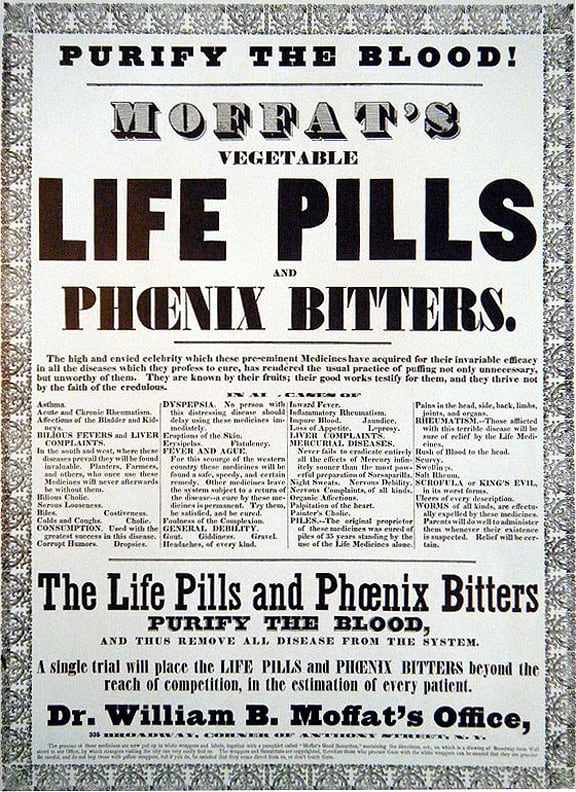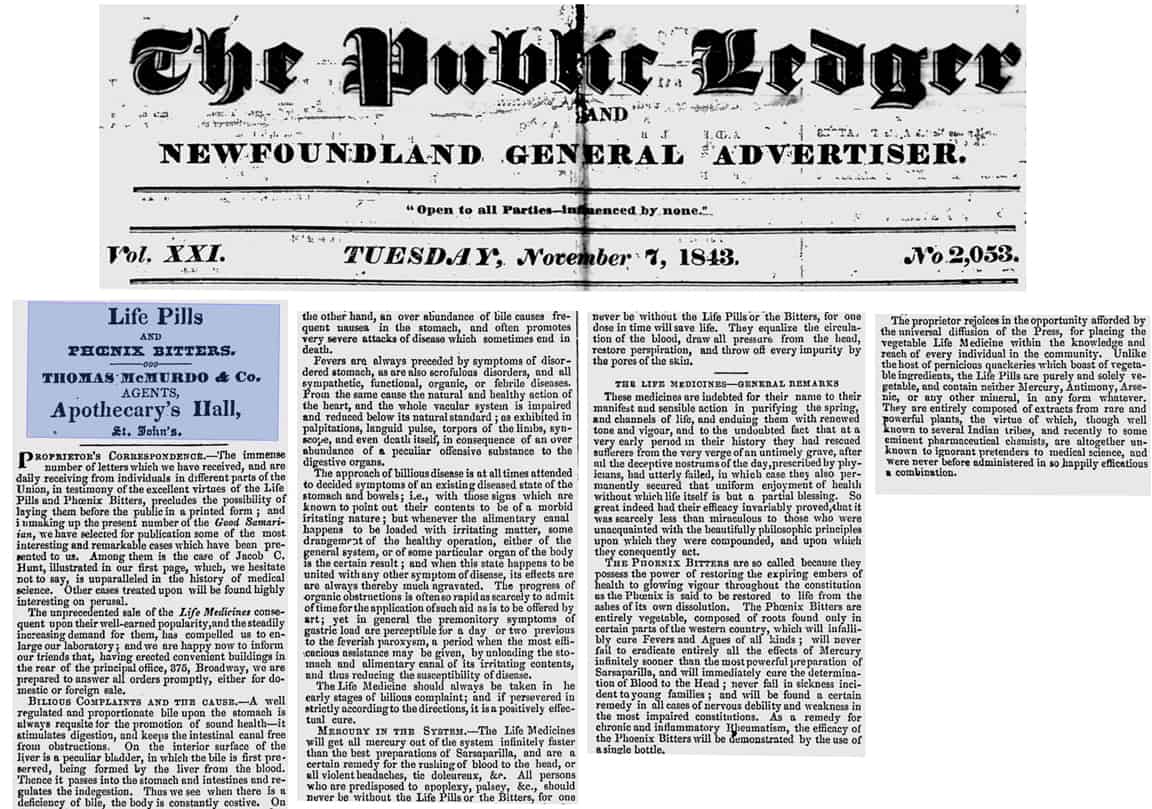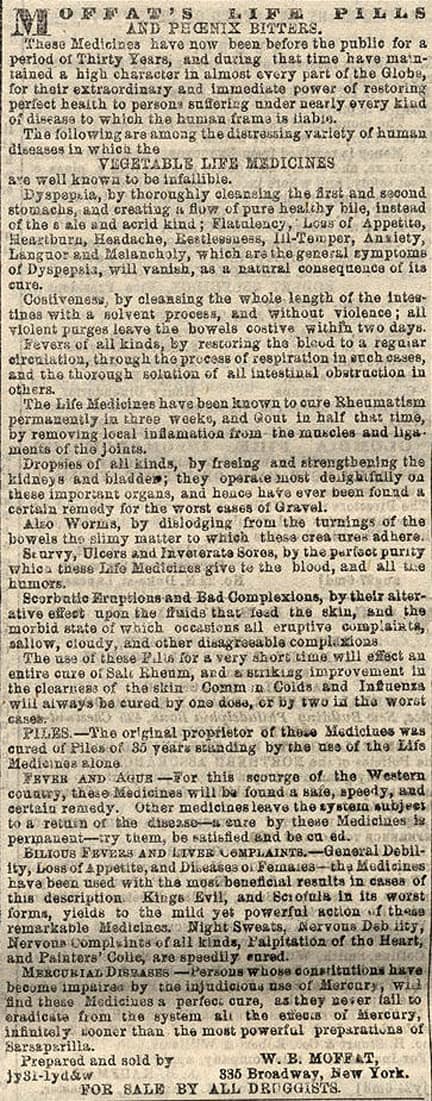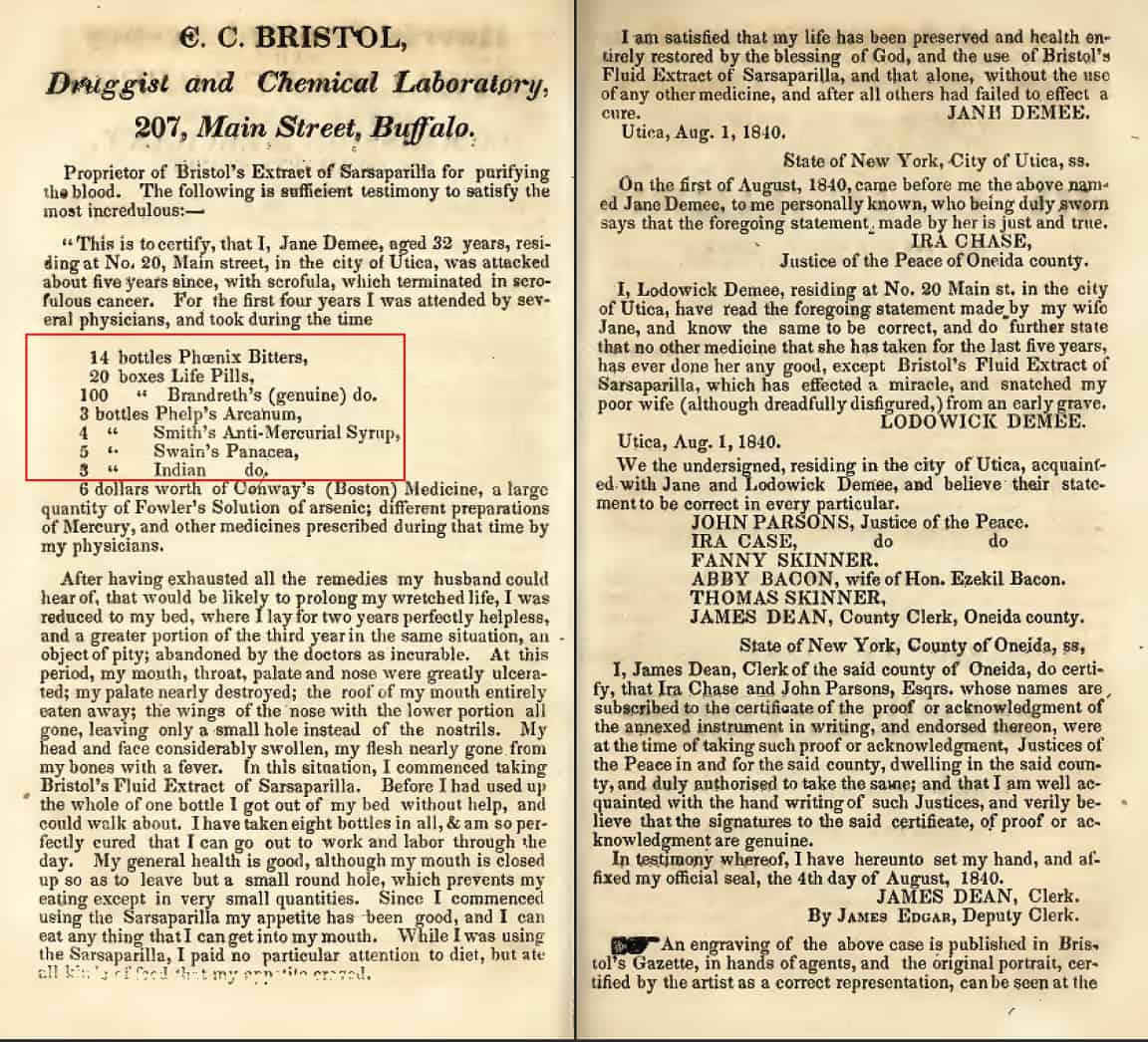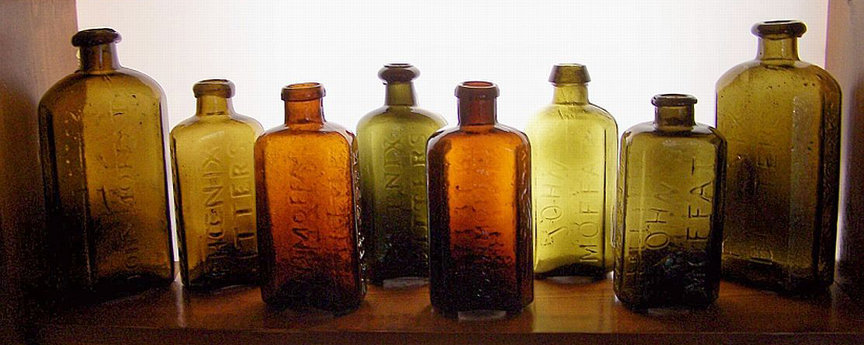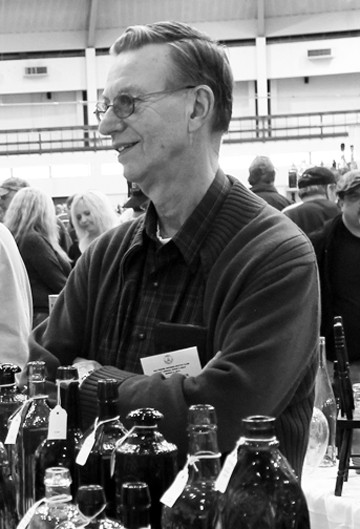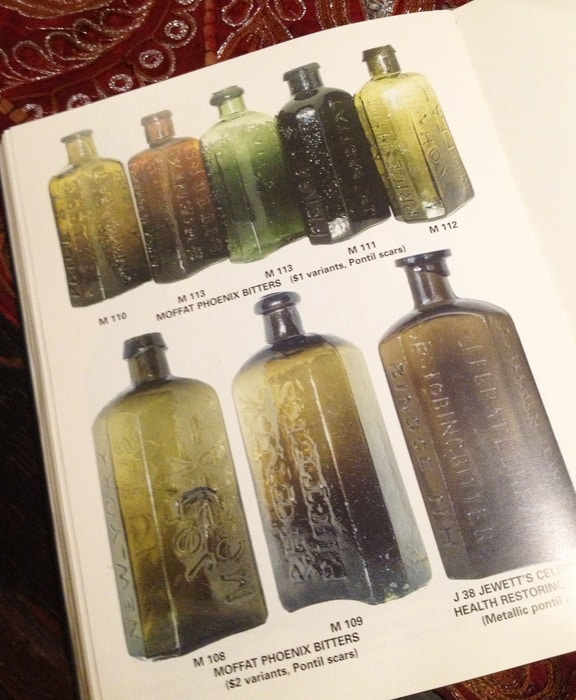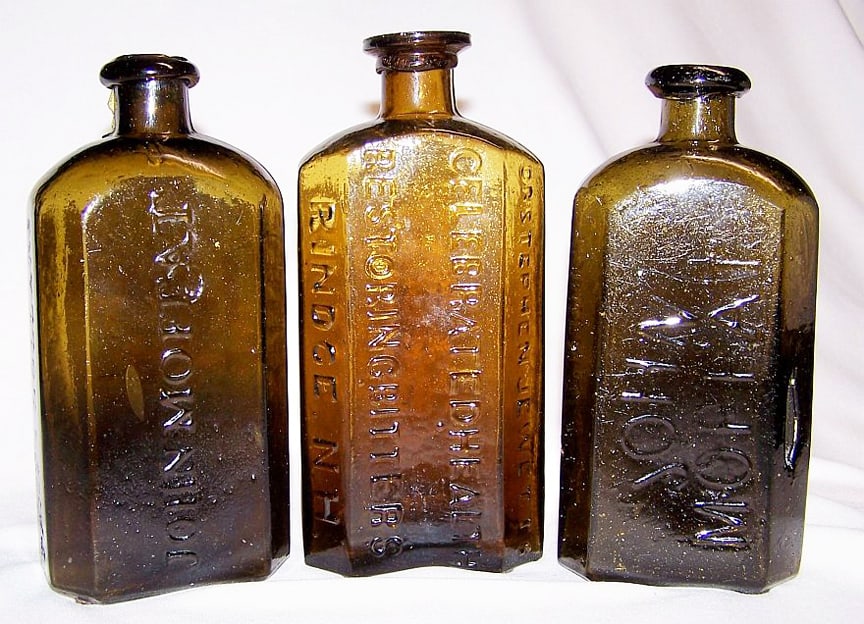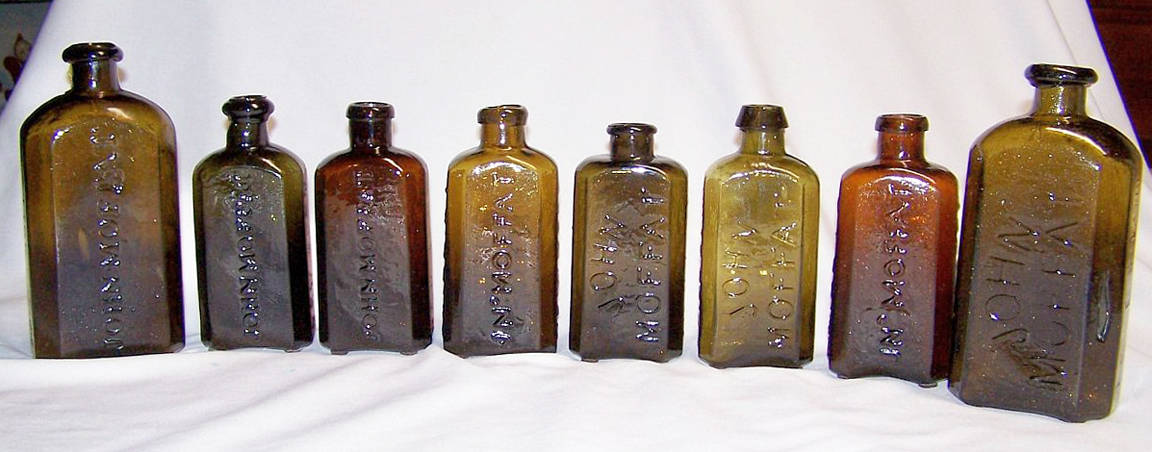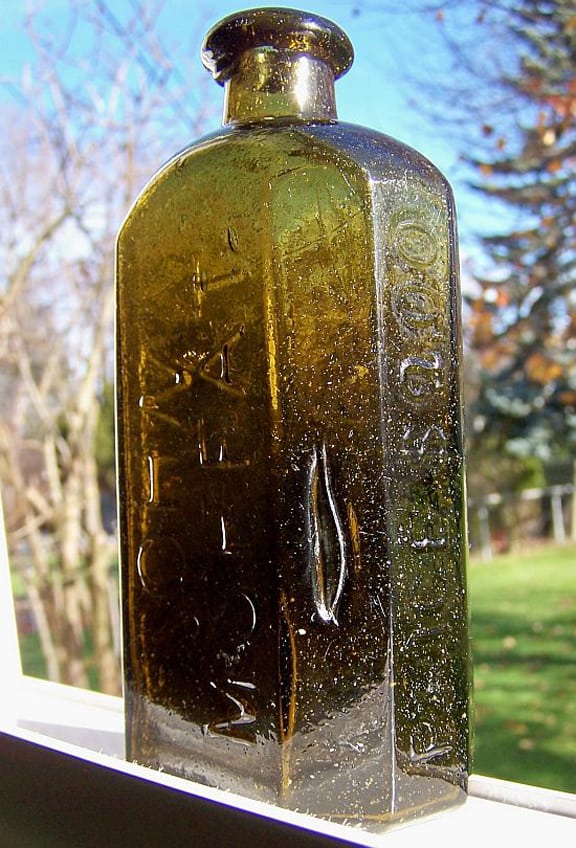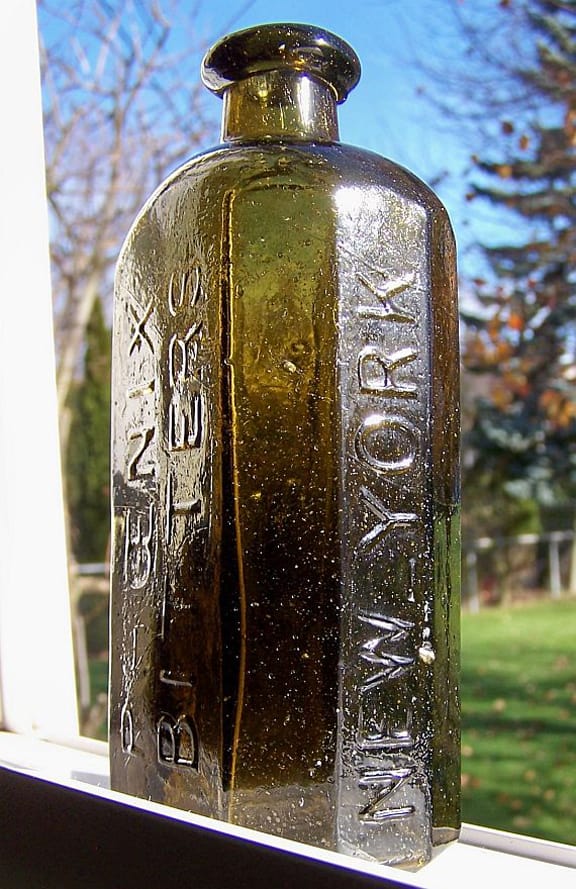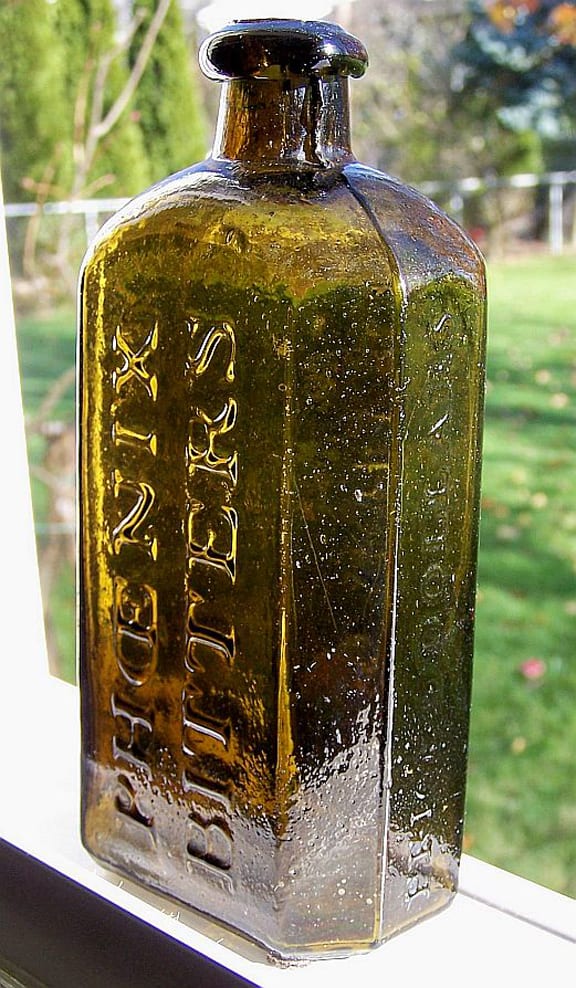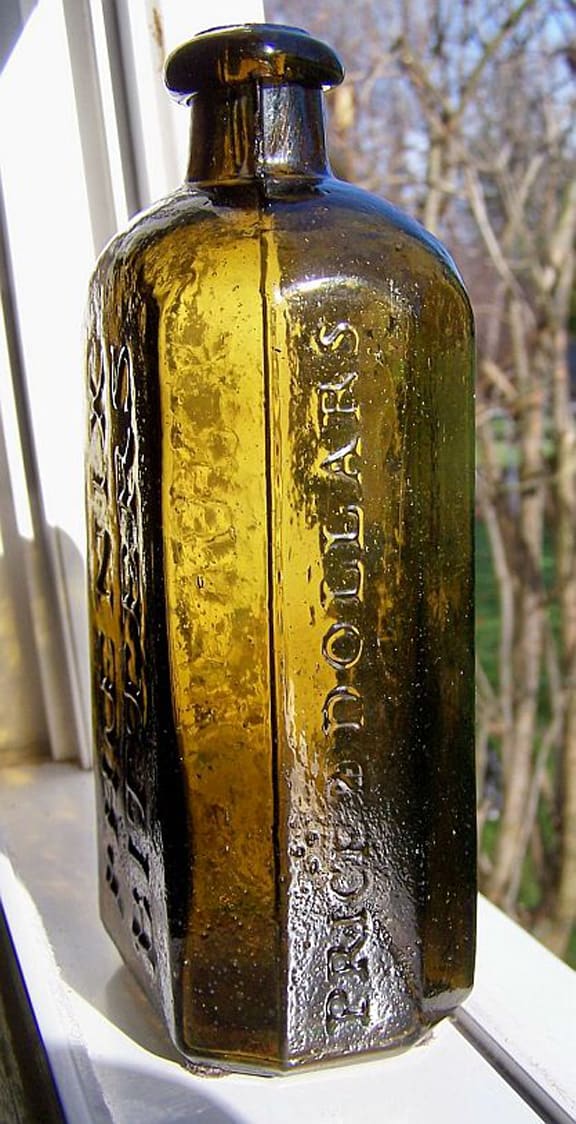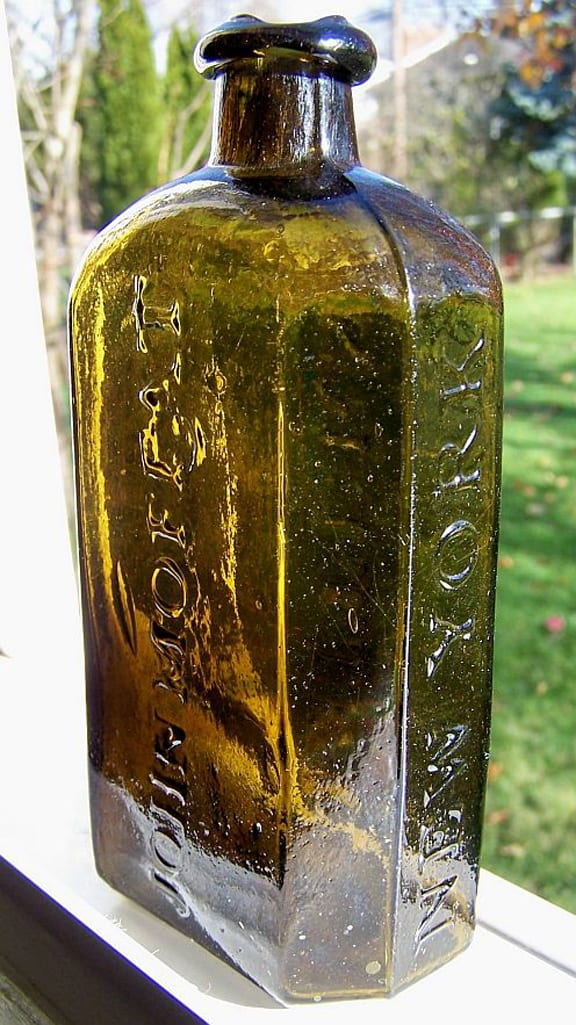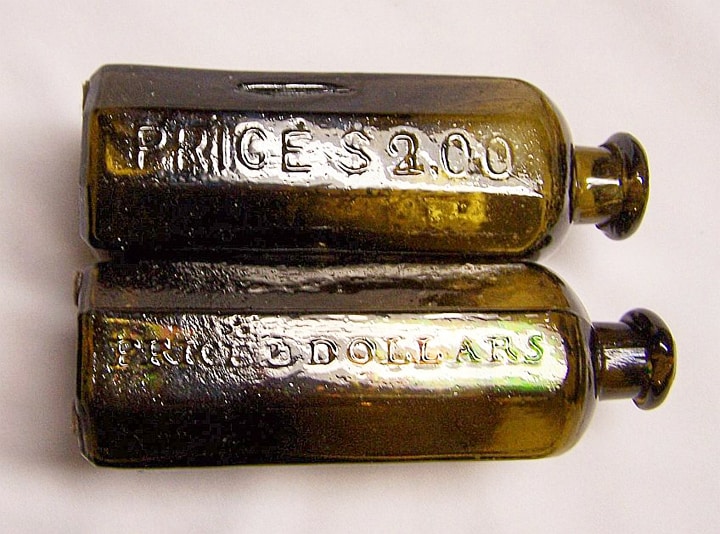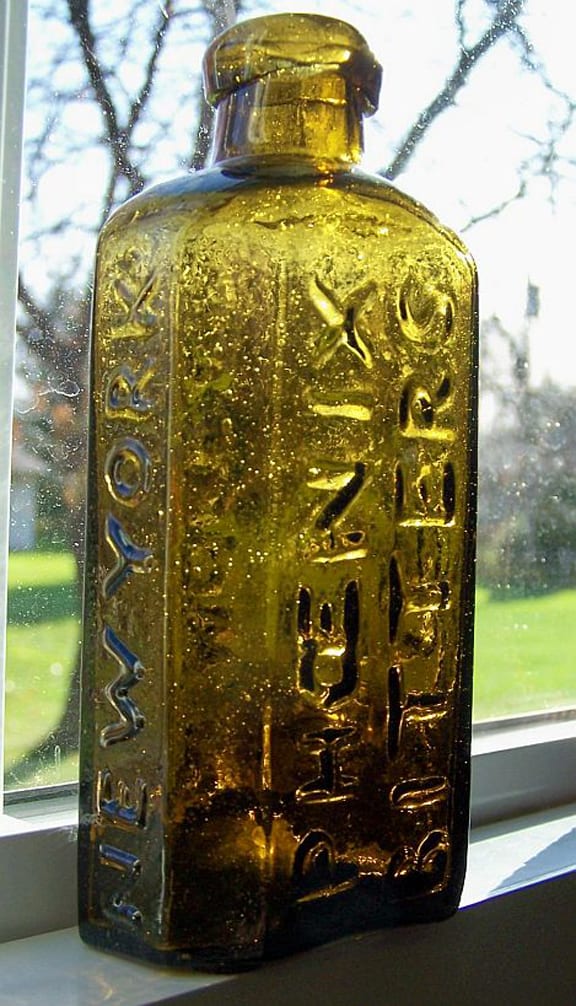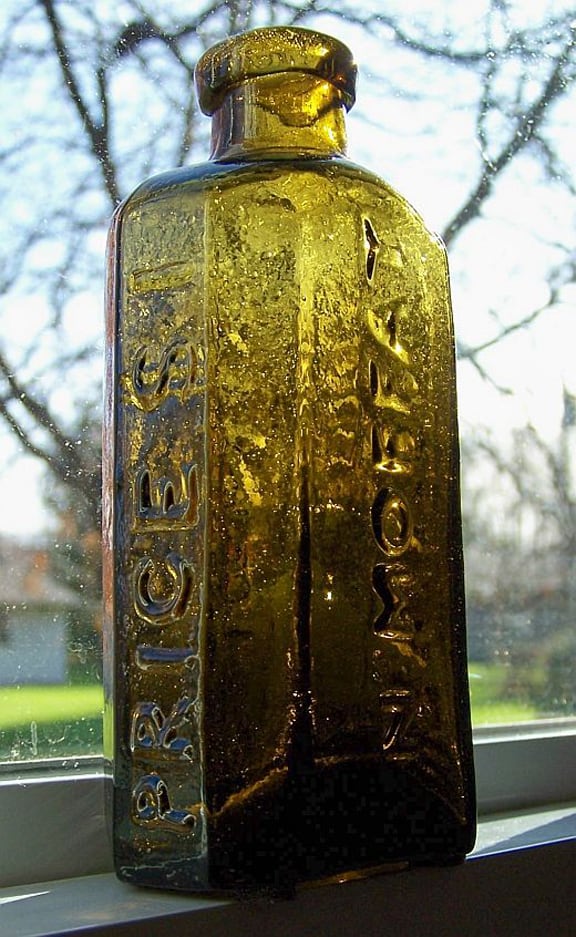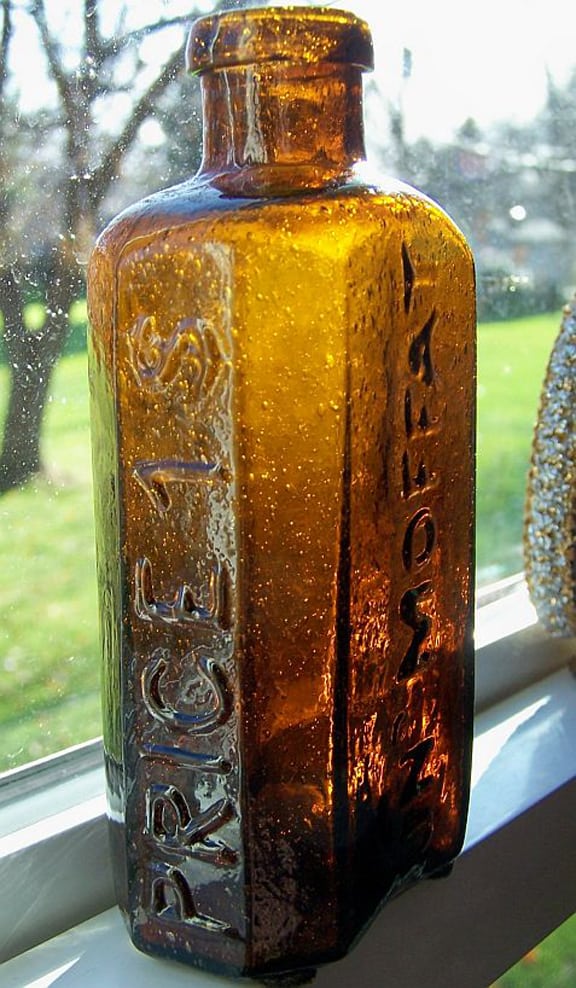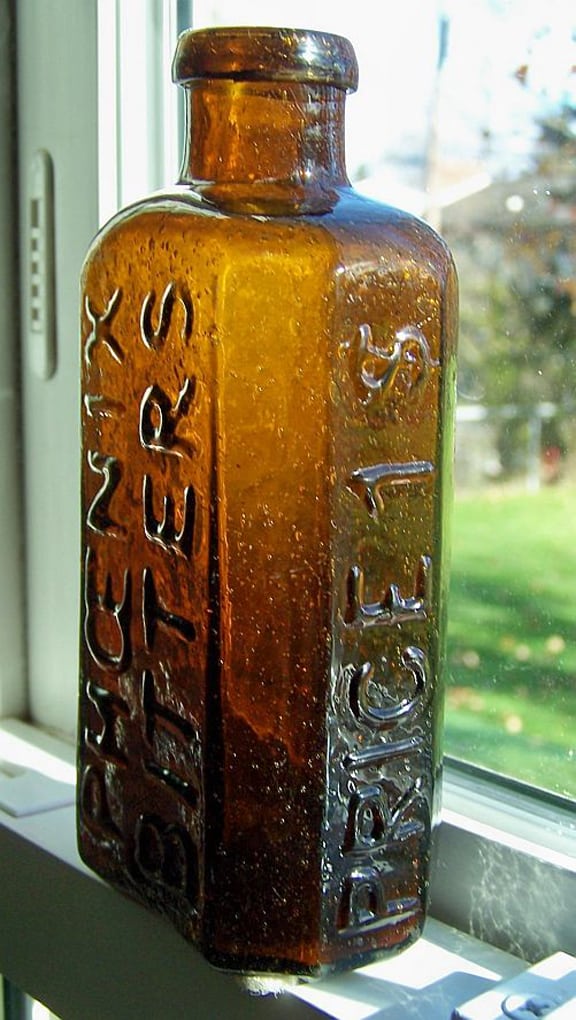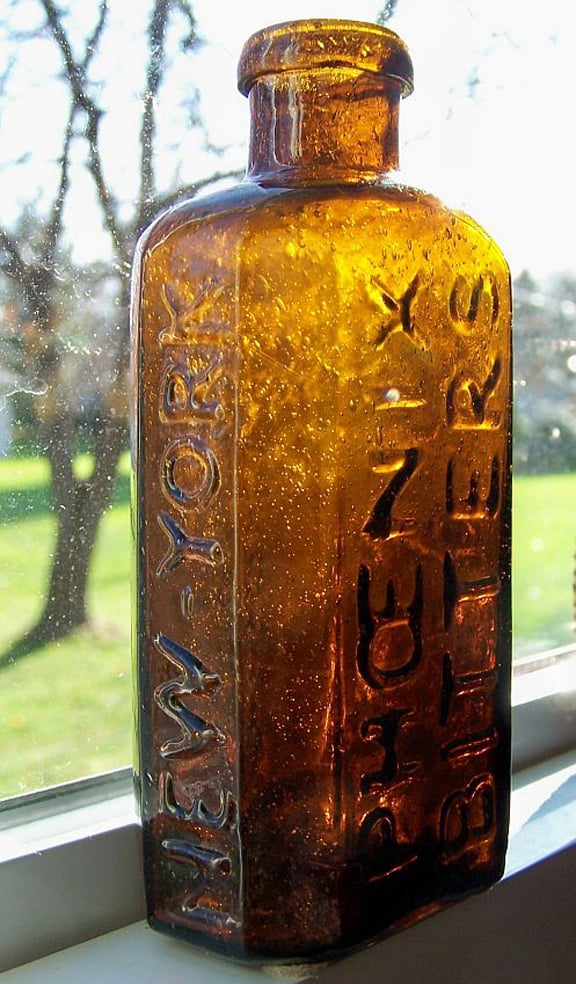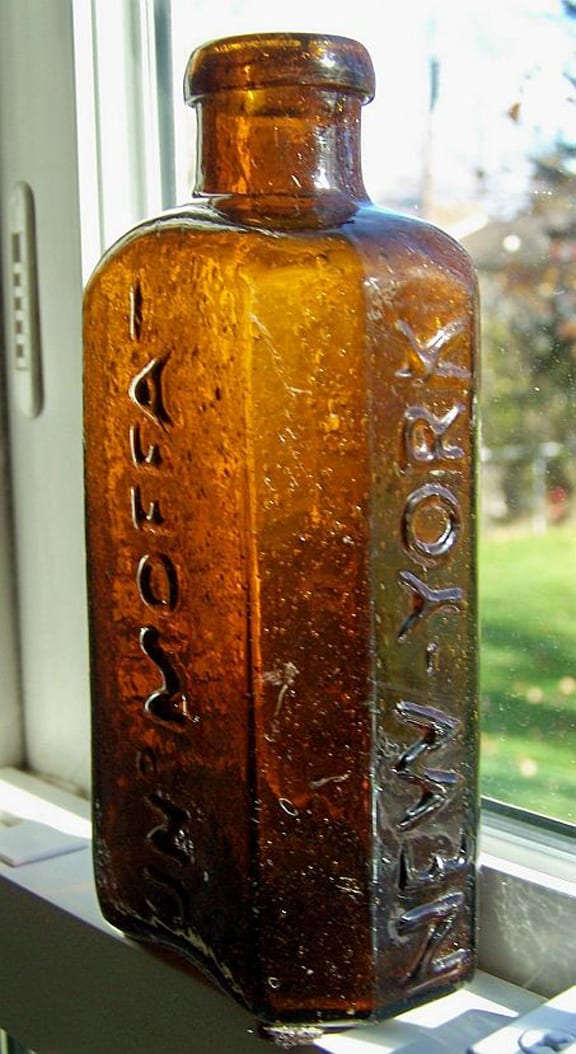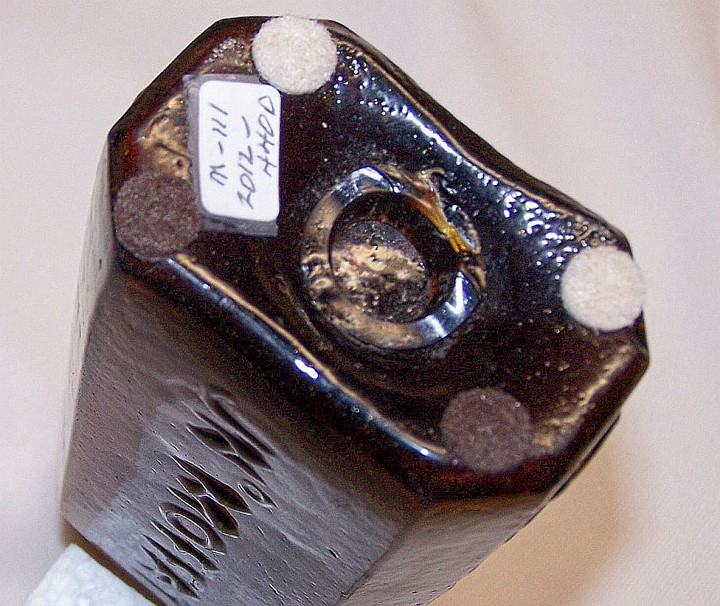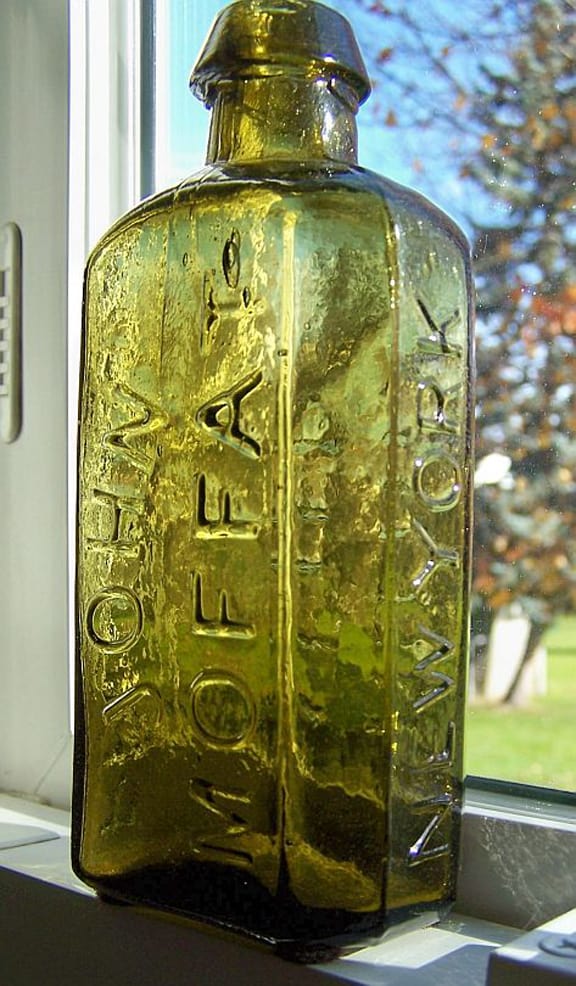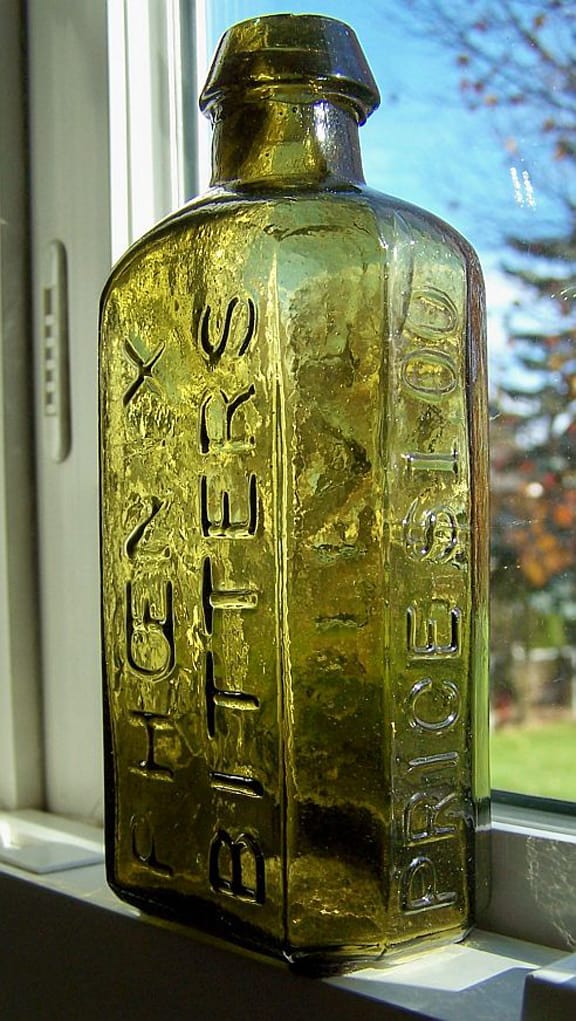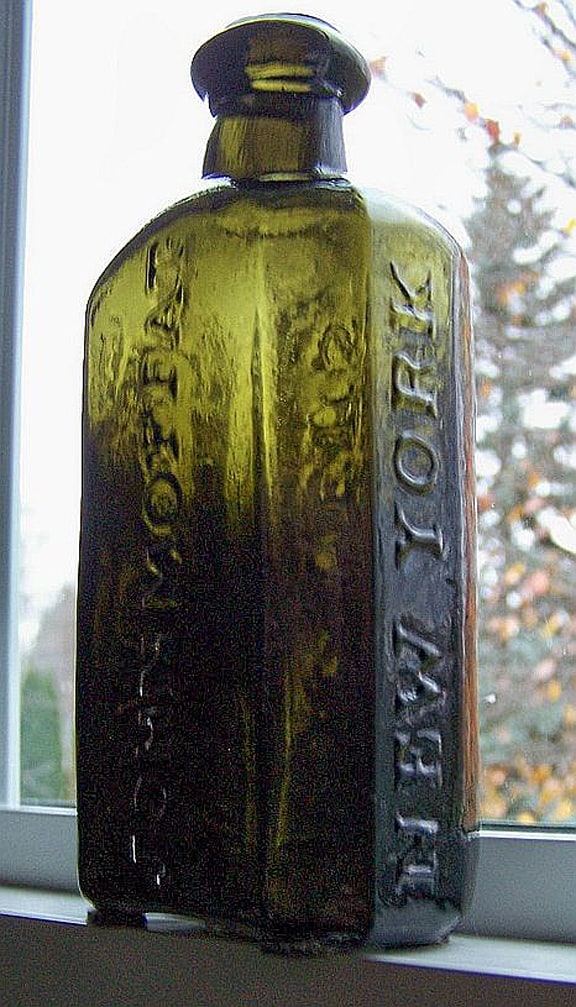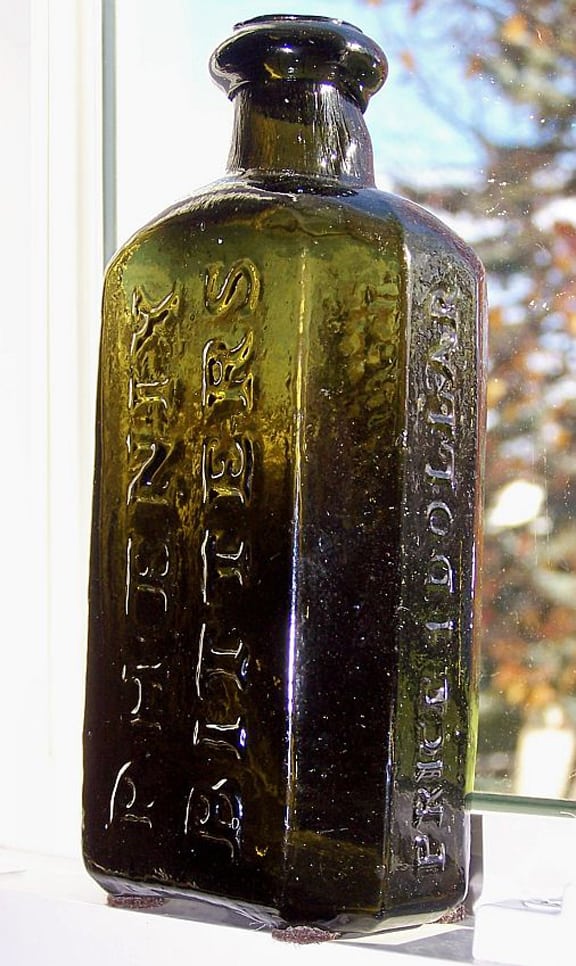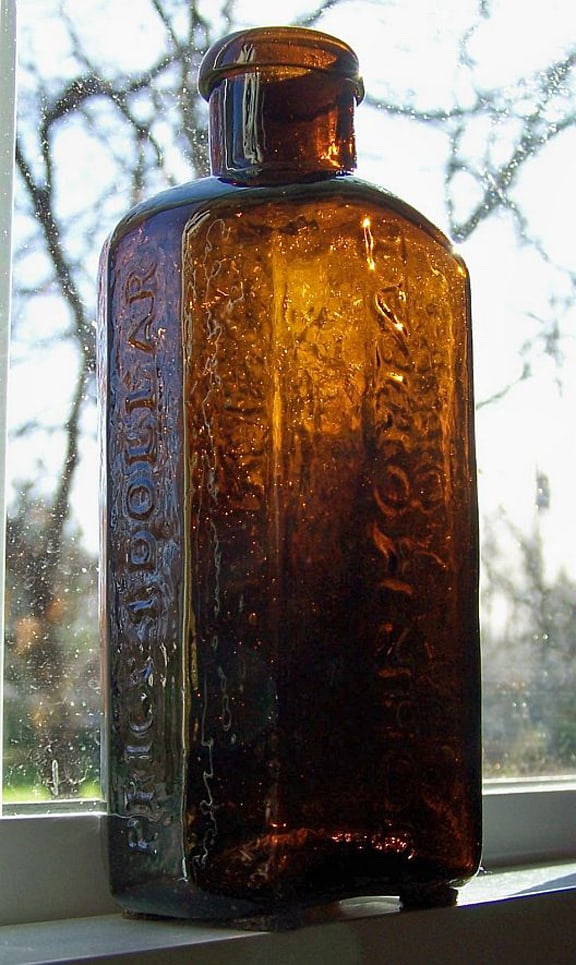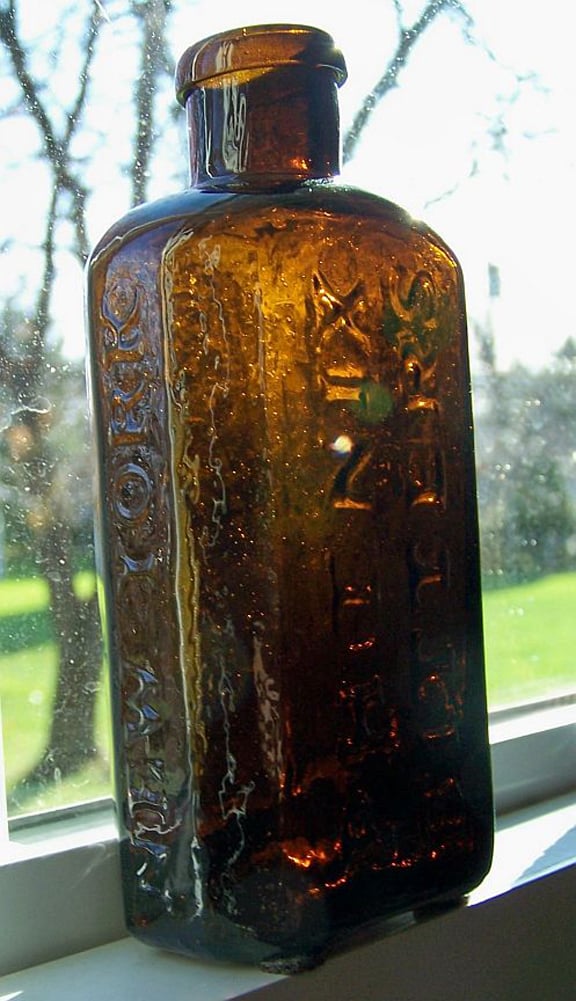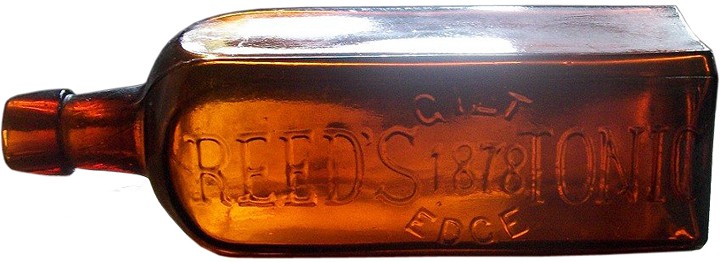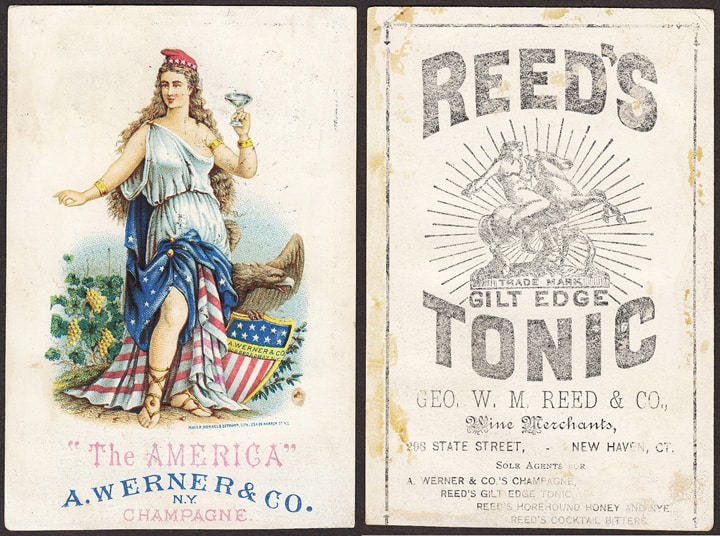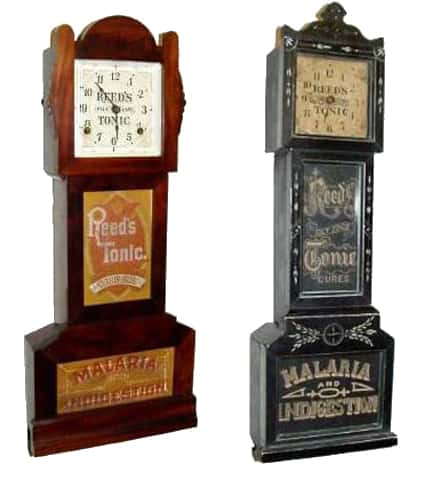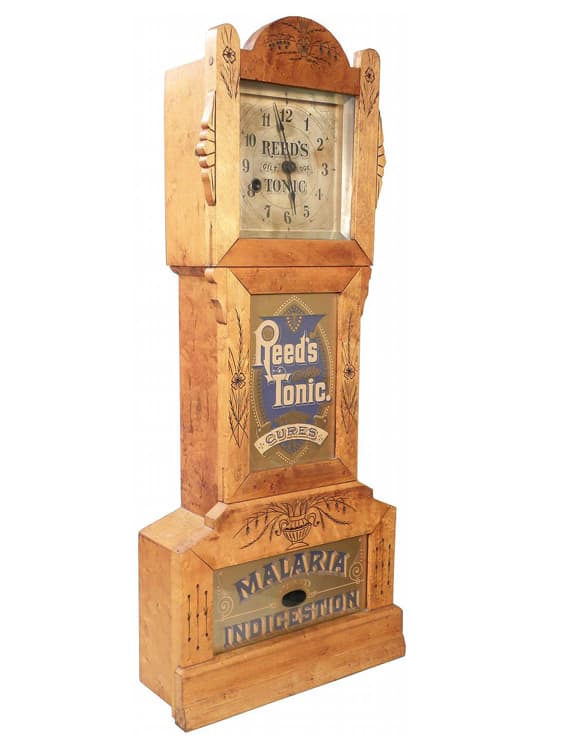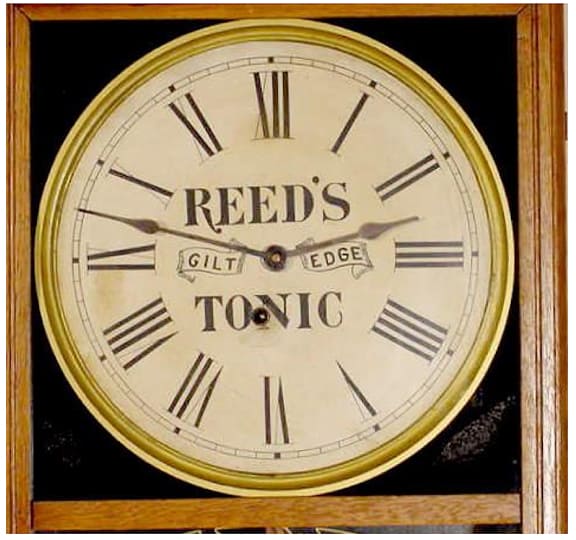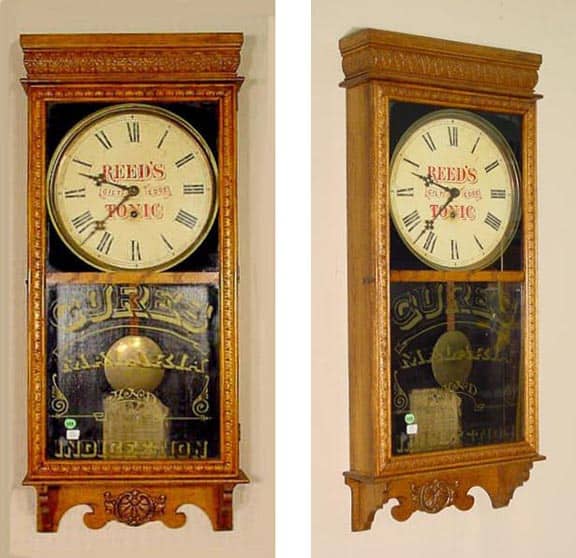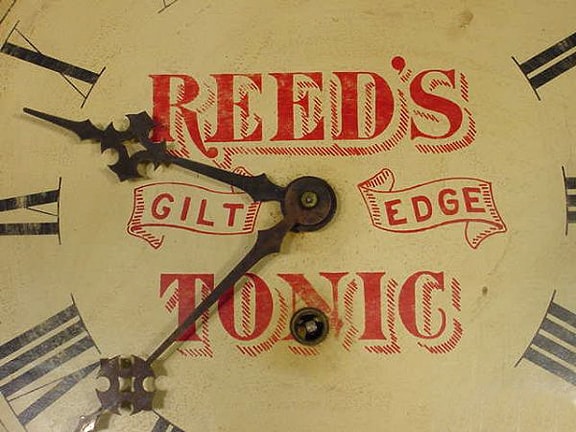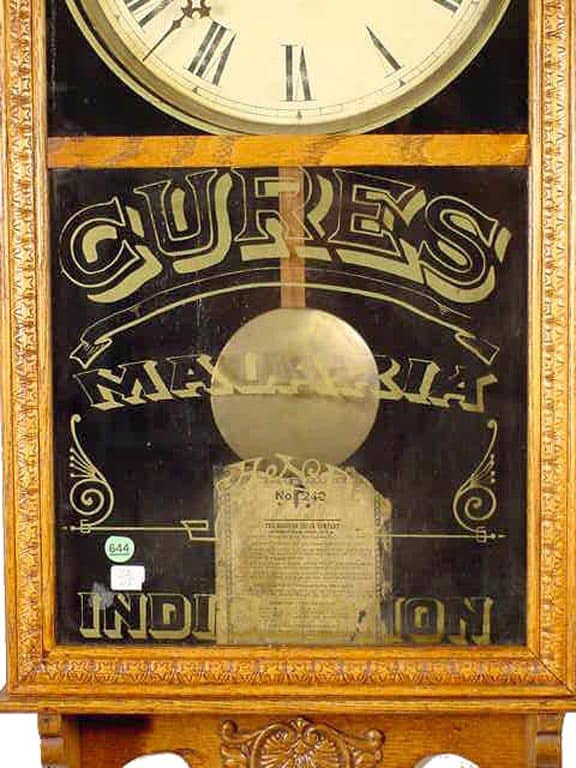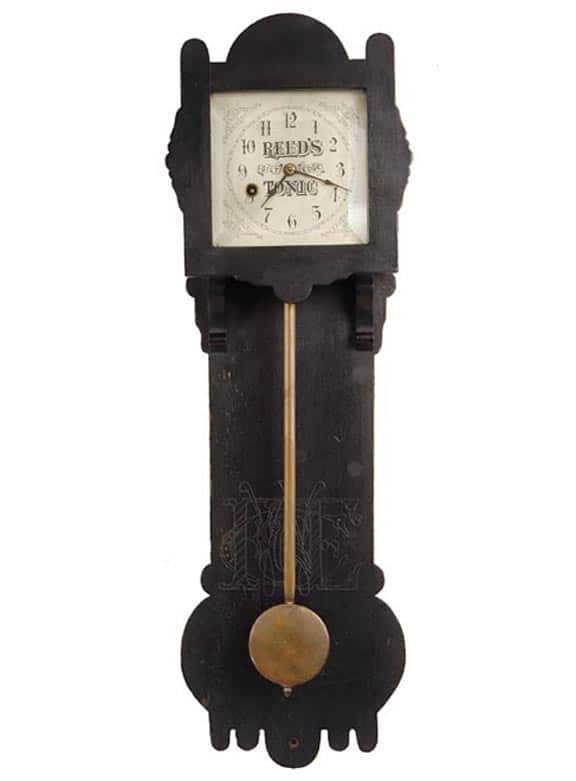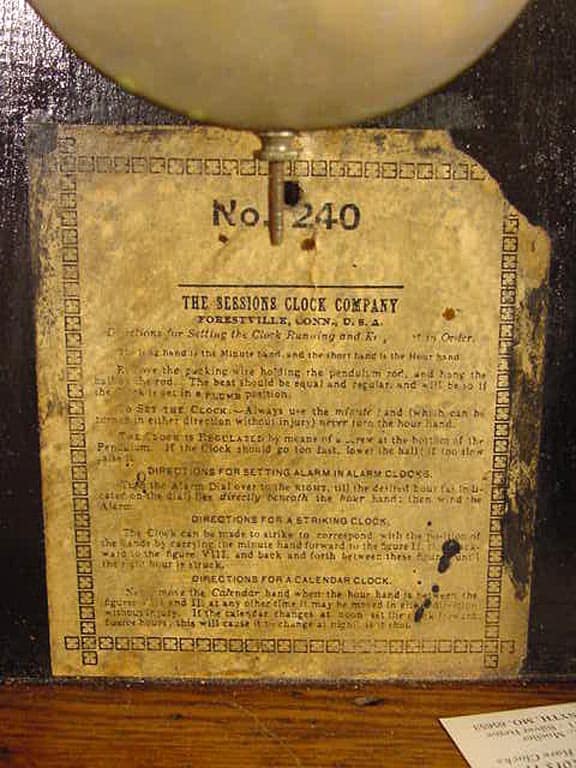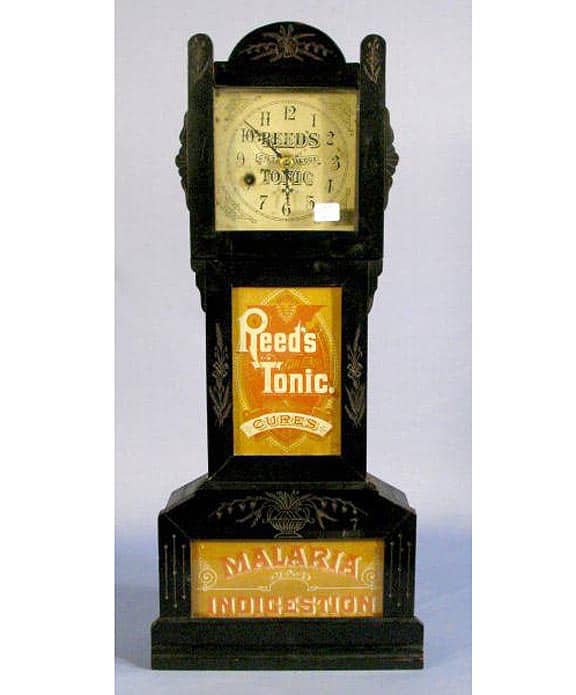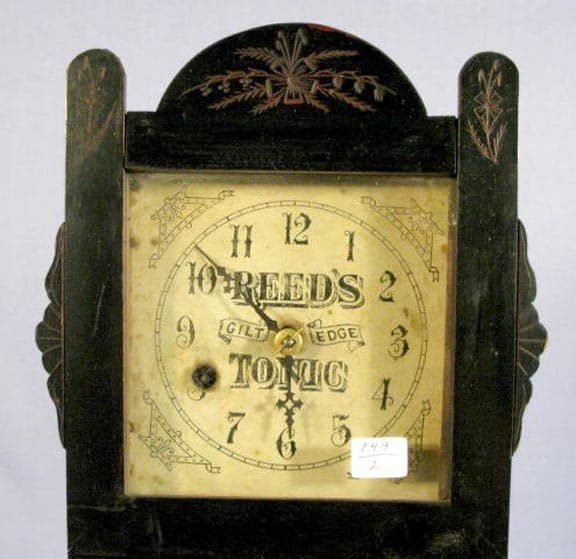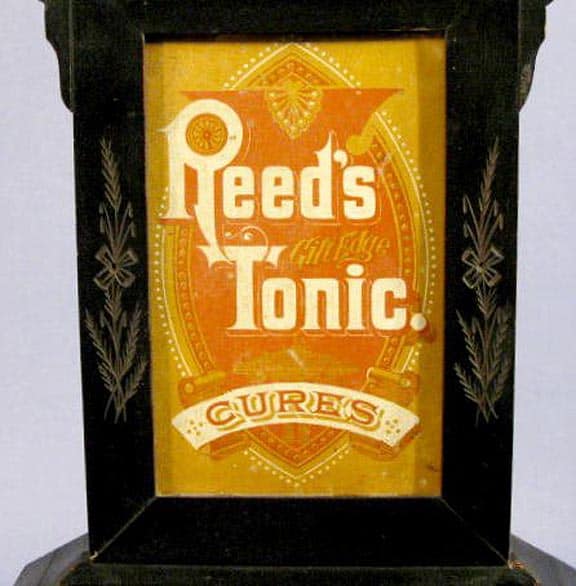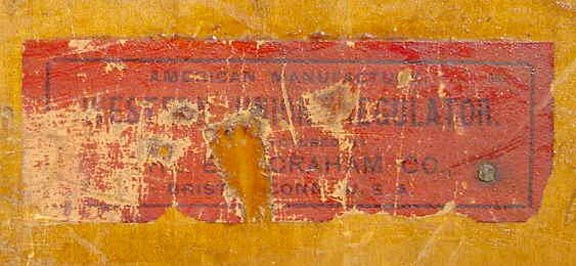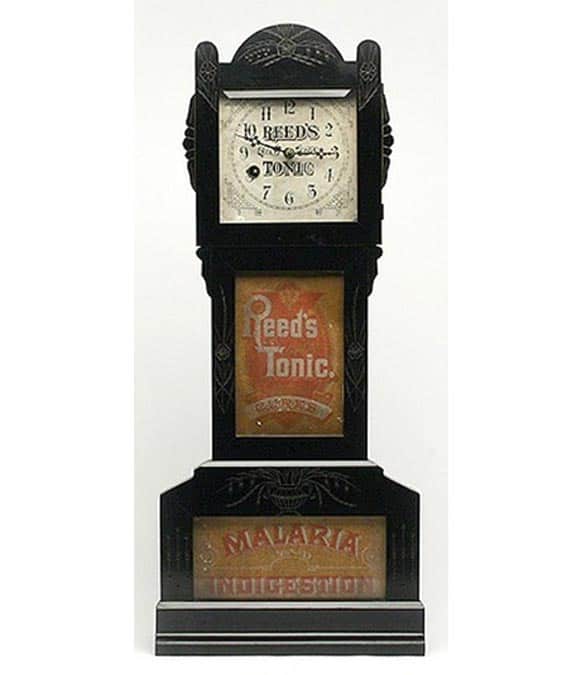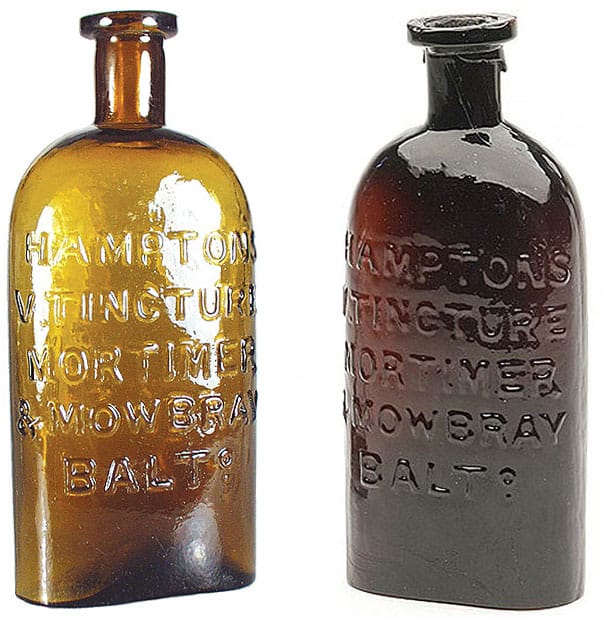
HAMPTON’S V. TINCTURE
MORTIMER & MOWBRAY
BALTO
14 December 1012
Dr. Hampton’s Vegetable Tincture: a medicine justly celebrated for performing the most wonderful cures of all scrofulous complaints and diseases arising from impurity of the blood, and obstructions in the various functions of the animal system.
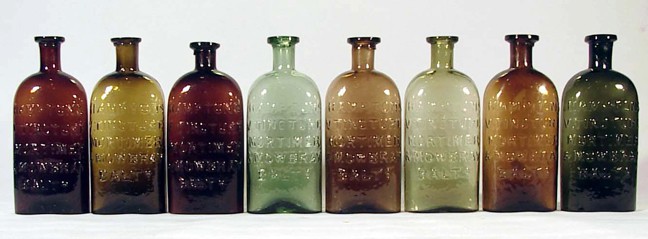
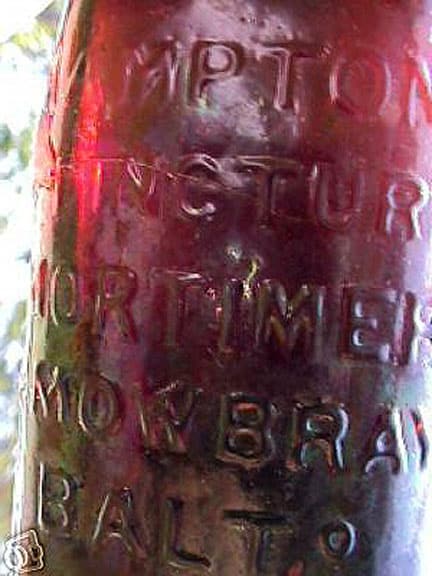
 Earlier this week, Chris Rowell posted a picture of his digging buddy, Phil Edmond’s color run (see above) of Hampton’s Vegetable Tinctures. This was good timing for me as I have been looking at Baltimore Glass Works and some of the great bottles and colors of their glass.
Earlier this week, Chris Rowell posted a picture of his digging buddy, Phil Edmond’s color run (see above) of Hampton’s Vegetable Tinctures. This was good timing for me as I have been looking at Baltimore Glass Works and some of the great bottles and colors of their glass.
All this Baltimore work of late has been inspired by the Baltimore Antique Bottle Club and their desire to update the Baltimore Bottle Book. I will be sending in some pictures from my Bitters collection as requested by Chris Rowell.
This post is really about four names; Phil Edmonds (collector and digger), Dr. Jesse Hampton (brand namesake), merchants John W. Mortimer (Mortimer & Mowbray) and his partner George W. Mowbray.
DR. JESSE HAMPTON
Life and services of Dr. Jesse Hampton (perhaps written by him) in the 82nd year of his life
How his celebrated tinct was discovered.
Born in Virginia in 1775, immigrated to Kentucky in 1779. In early manhood he was so reduced by disease, almost wrecked in constitution. He spent most of his living seeking medical advice and attention and grew none-the-better, but worse. Finding no relief from his physician, he resolved to try the restorative powers of the roots and barks leaves and plants of the forest.
He then lived among the red-men of the western wilds, having heard much about their expertise in the use of vegetable remedies of the forest knowing their mode of medical practice must be one of practical experiences and not of theoretical speculatum. He made himself acquainted with their remedies and also of the practical medicinal knowledge of the early Kentucky settlers who had obtained them from the medicine men. He carefully studied the nature of the medicines used by them and combined them according to the light he received, used them as he had been taught and had the cheering satisfaction of finding disease driven from his body and vigorous health given.
His case was no ordinary kind but astonishing to his friends and neighbors the fame of it spread people far and near sent to the Doctor for his successful and wonderful combination of Indian herb remedies which was freely given them until the cases became so numerous and the demand so great that the Doctor was advised by his friends and induced through justice to himself to put up his Vegetable Tincture in bottles and charge a price for it.
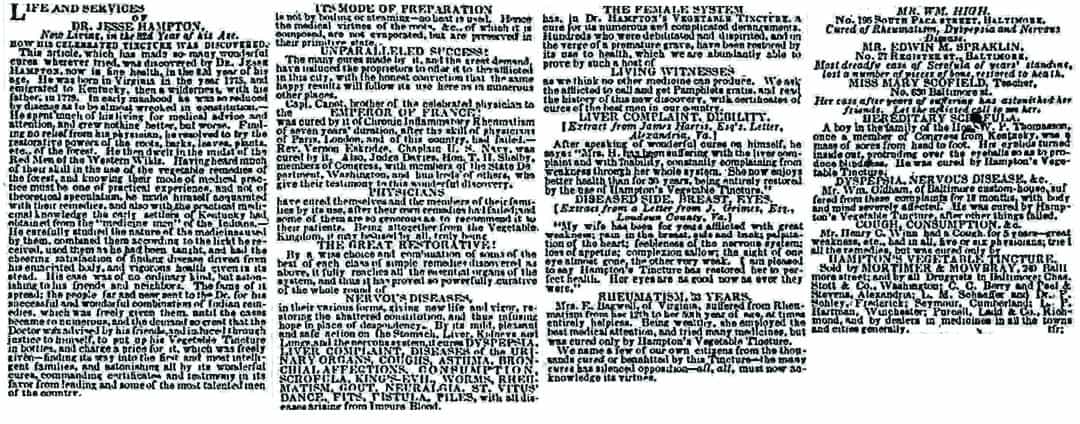
Life and Services of Jesse Hampton (provided by Phil Edmonds)
PHIL EDMONDS

Phil Edmonds is a prolific digger and collector of early American glass. All of the Hampton’s Vegetable Tincture bottle pictures have been provided by Phil in this post unless otherwise noted.
“This is my attempt to share historical perspective I’ve gained through various hobbies. Sorting through 18th, 19th and early 20th century refuse has stimulated me to learn much about what it was like to live here in the past. Through digging I have assembled a nice collection of artifacts and learned a lot about my state. It’s been fun for me to correlate them to specific periods in History. My interest is very broad but learning about the development of Glass manufacturing during Colonial times in Maryland has been especially rewarding. The reason I chose Maryland Glass House as the name for this site. Phil’s Bottle World would probably more appropriate. Thanks”
Phil Edmonds (visit Maryland Glass House site)

Ferd, I was hesitant to send this picture (above) before, figure it cant hurt, so please use this if you’d like. It would be nice if you could give my contact info and say something to the effect if you have a color that’s not here and it’s for sale Phil would love to have a chance to buy it. edmondsp@gmail.com
I feel the earliest ones are aqua. I’ve dug aqua un embossed bottles that appear to be the same mold prior to it’s embossing. If you want more digger jargon, Hampton’s are one of the Holy grails for Baltimore diggers, they are rarely found whole, come smooth base, there’s a tool top that’s 8o’s and come in all the colors that Baltimore Glass Works is famous for.
Because of the diverse color offerings, we speculate the reason for so much variation in the Vegetable Tincture is that left over glass from previous orders was used to fill Mr. Hampton’s orders. The public was enamored with glass color during that time and it seems he took advantage of this.

Phil Edmonds happy in a hole
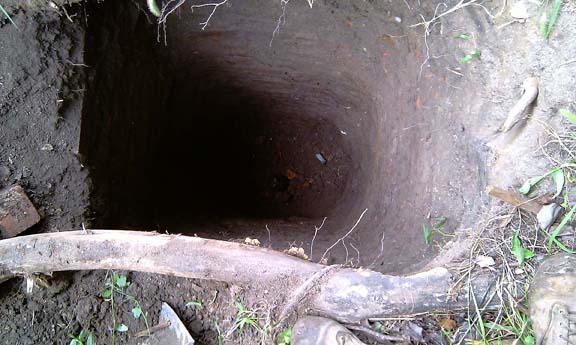
The HAMPTON’S VEGETABLE TINCTURE Hole
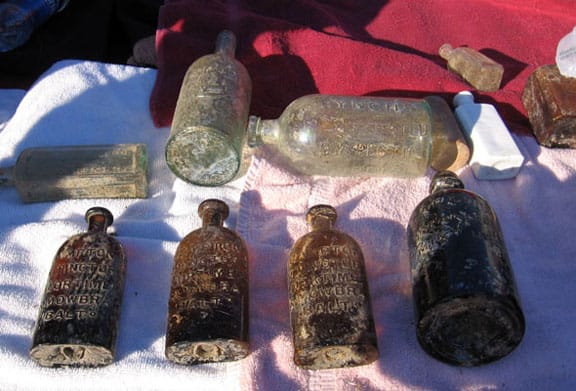
Three freshly dug HAMPTON’S VEGETABLE TINCTURE bottles – Phil Edmonds
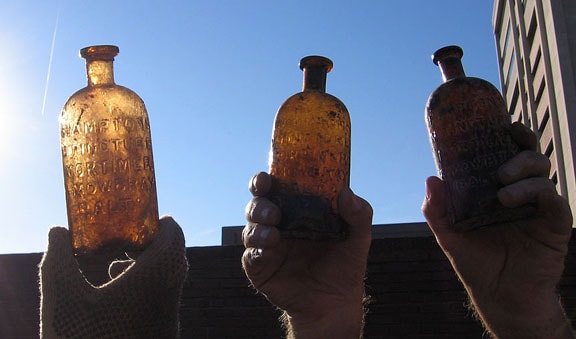
Phil Edmonds and his digging buddies first dug HAMPTON’S VEGETABLE TINCTURES. You can already see the great colors.
MORTIMER & MOWBRAY
JOHN W. MORTIMER
GEORGE W. MOWBRAY
The Mayor of Portsmouth acknowledges the receipt of $1,273.23 from Richmond; $343.13 from Fredericksburg; $2,912 from Petersburg; $10 from Oceola tribe of Red Men, Alexandria. Drugs and money from Philadelphia before mentioned; game from Baltimore; any quantity of Hampton’s Vegetable Tincture from Mortimer & Mowbray, Baltimore. Contributions should be directed to D. D. Fiske, or W. Watts, Portsmouth.
The Yellow Fever in Norfolk and Portsmouth, Virginia, 1855, as reported in The Daily Dispatch, Richmond, Virginia, transcription by Donna Bluemink
THE YELLOW FEVER – Important letter from the venerable Dr. Hampton in the 81st year of his age. In a letter to the proprietors of Hampton’s Tincture, dated August 18th, 1855, he says:
“I see in the papers, that the Yellow Fever is now prevailing to some extent in Virginia, I have ever believed that the Tincture (Hampton’s) given in large doses on the discovery of the first symptoms, a reaction would at once follow and immediate relief be the result. I would recommend the Tincture, in preference to all known discoveries.”
Hampton’s Vegetable Tincture the great restorator and invigorator. It has shewn itself most powerful curative of NERVOUS DISEASES, in their various forms, giving new life and vigor, restoring the shattered constitution and thus infusing hope in place of despondency. By its mild, pleasant and safe action on the stomach, liver, kidneys, lungs and the nervous system, it cures Dyspepsia, Liver Complaint, Diseases of the Urinary Organs, Coughs, Asthma, Bronchial Affections, Consumption, Scrofula, St. Vitus’ Dance, King’s Evils, Worms, Rheumatism, Gout, Neuralgia, Fits, Fistula, Piles, with diseases arising from impure blood.
The FEMALE SYSTEM has in Dr. Hampton’s Vegetable Tincture a cure for its numerous and complicated derangements. Hundreds who have been debilitated and dispirited, and on the verge of a premature grave, have been restored by its use to blooming health, which we are abundantly able to prove by such a host of LIVING WITNESSES as we think no other medicine can produce.
$1 per bottle, six bottles for $5.
Sold in Richmond, by O. A. Strecker, and Purcell, Ladd & Co., and by all the Druggists in Petersburg and elsewhere. Call and get Pamphlets gratis. au 25–d&cts.
The Yellow Fever in Norfolk and Portsmouth, Virginia, 1855, as reported in The Daily Dispatch, Richmond, Virginia, transcription by Donna Bluemink
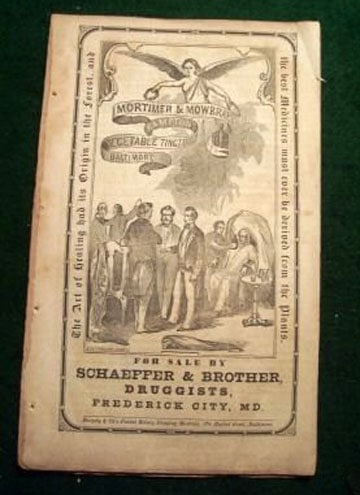 Mortimer & Mowbray Proprietors
Mortimer & Mowbray Proprietors
240 Baltimore Street, Baltimore, Maryland
John W. Mortimer (residence 245 Saratoga)
George W. Mowbray (residence 66 N. Front)
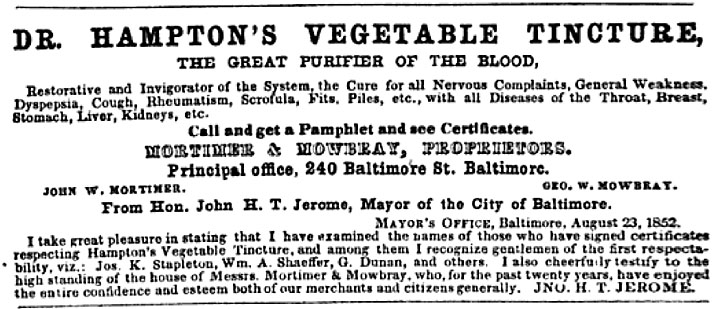
W.W. Reilly & Co.’s Ohio State Business Directory for 1853-54
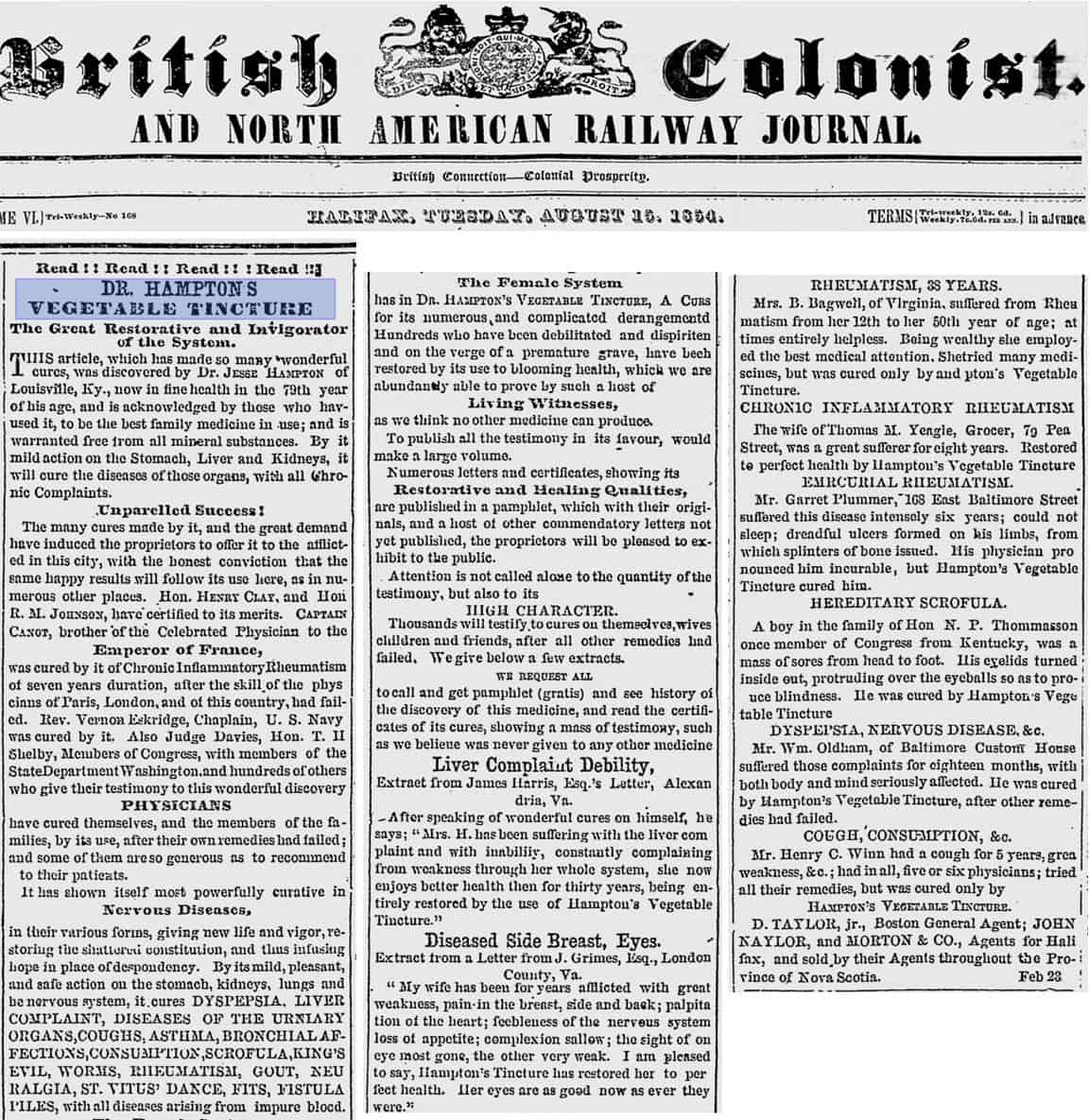
Advertisement for Hampton’s Vegetable Tincture in the British Colonist and North American Railway Journal, Halifax, Tuesday, August 15, 1854
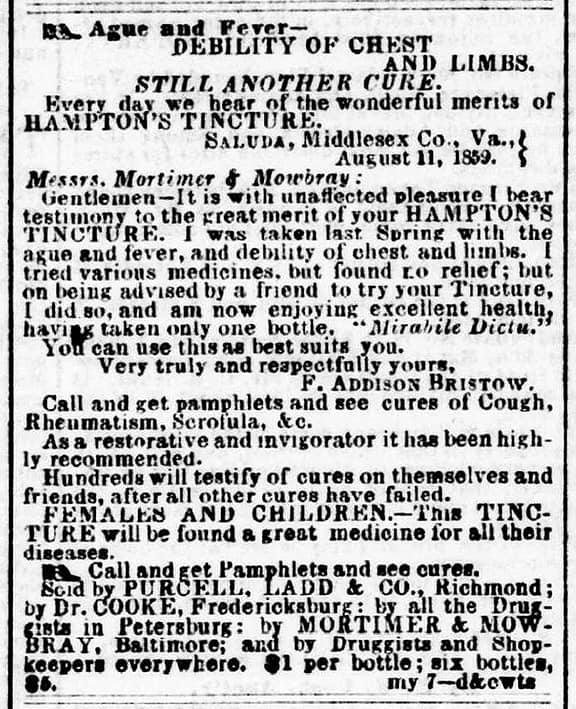
The Daily Dispatch – Richmond, Virginia, May 19, 1860
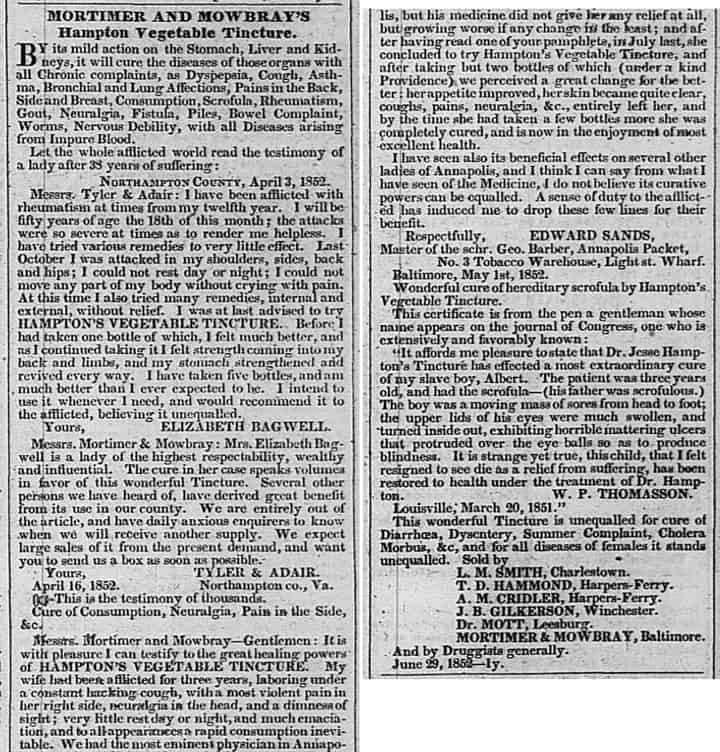
Spirit of Jefferson – Charlestown, Virginia, Tuesday, June 7, 1853
GALLERY
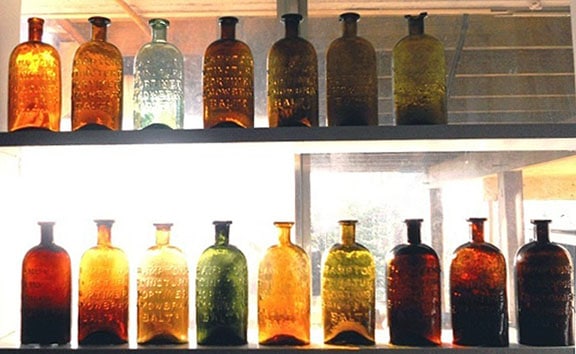
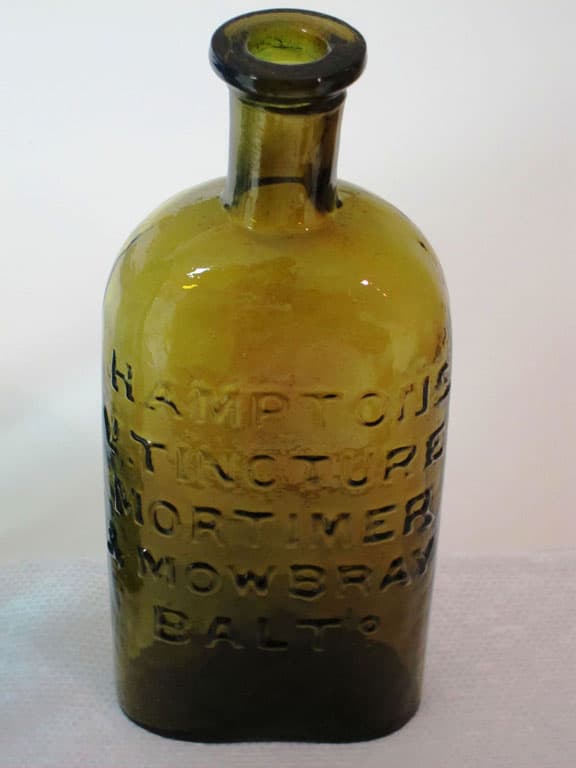
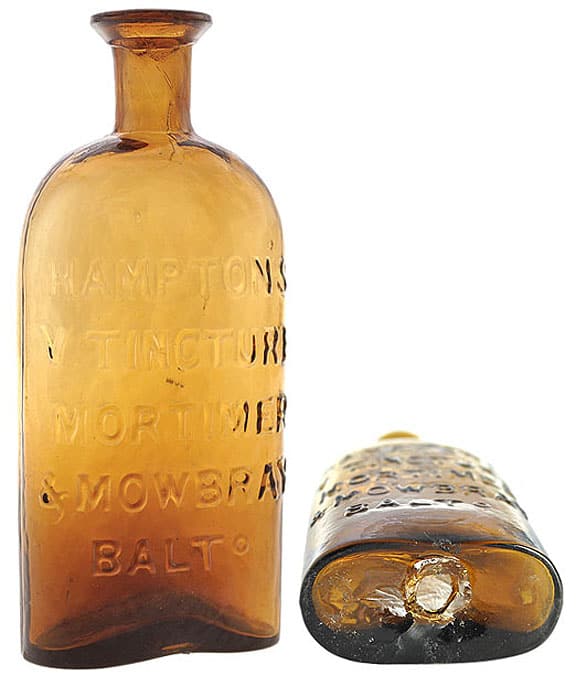
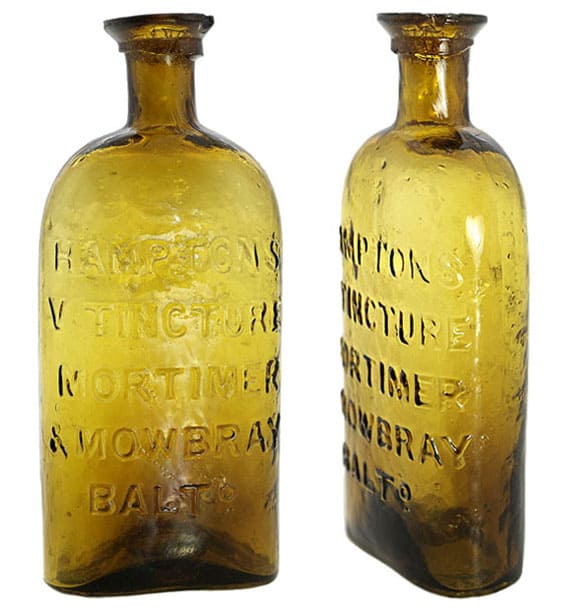
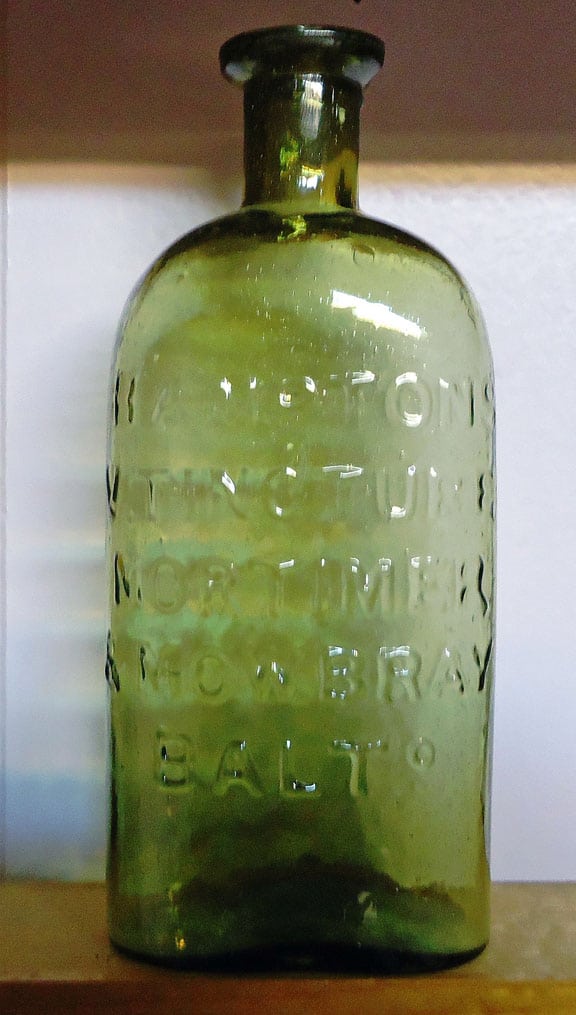
![]() Old Taylor Straight Kentucky Bourbon Whiskey was named in honor of Colonel Edmund Haynes Taylor, Jr. (E.H. Taylor) (1830-1923). Taylor was one of Kentucky’s original Bourbon aristocrats and was called the “father of the modern bourbon industry.” He was an industry leader who greatly advanced the quality of Kentucky Bourbon and safeguarded the Bourbon label from bogus producers. Taylor supported and produced some really nice advertising all exemplifying the quality of his product. His picture, Old Taylor Castle, signature and Distillery images occurred on many pieces of advertising throughout 20th century advertising in great magazines like LIFE and LOOK.
Old Taylor Straight Kentucky Bourbon Whiskey was named in honor of Colonel Edmund Haynes Taylor, Jr. (E.H. Taylor) (1830-1923). Taylor was one of Kentucky’s original Bourbon aristocrats and was called the “father of the modern bourbon industry.” He was an industry leader who greatly advanced the quality of Kentucky Bourbon and safeguarded the Bourbon label from bogus producers. Taylor supported and produced some really nice advertising all exemplifying the quality of his product. His picture, Old Taylor Castle, signature and Distillery images occurred on many pieces of advertising throughout 20th century advertising in great magazines like LIFE and LOOK.